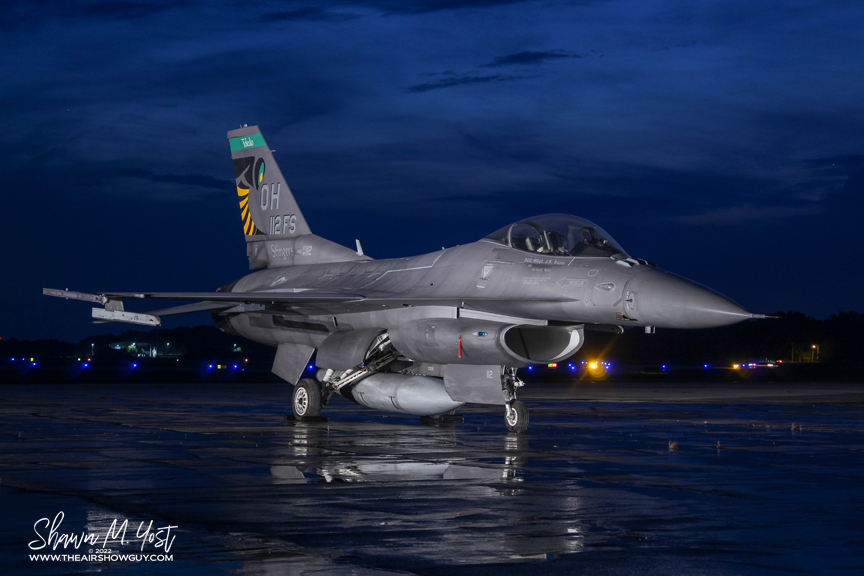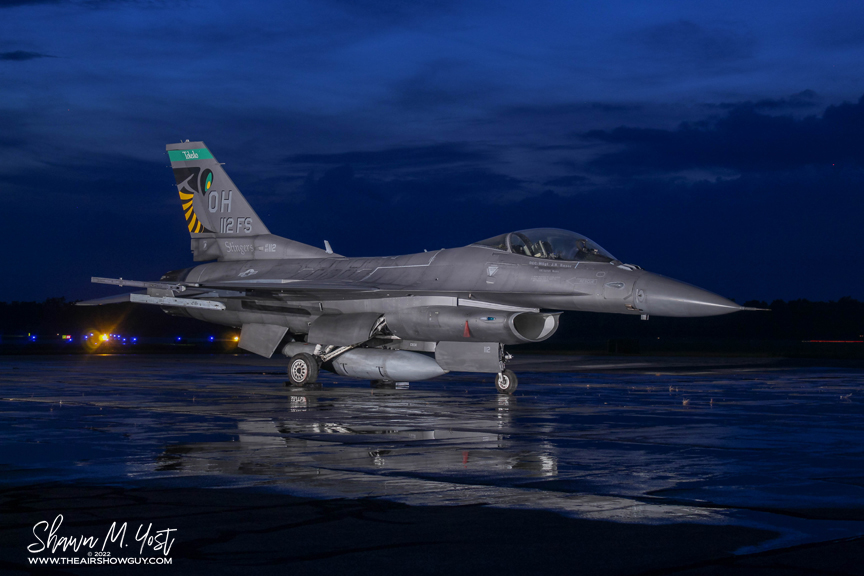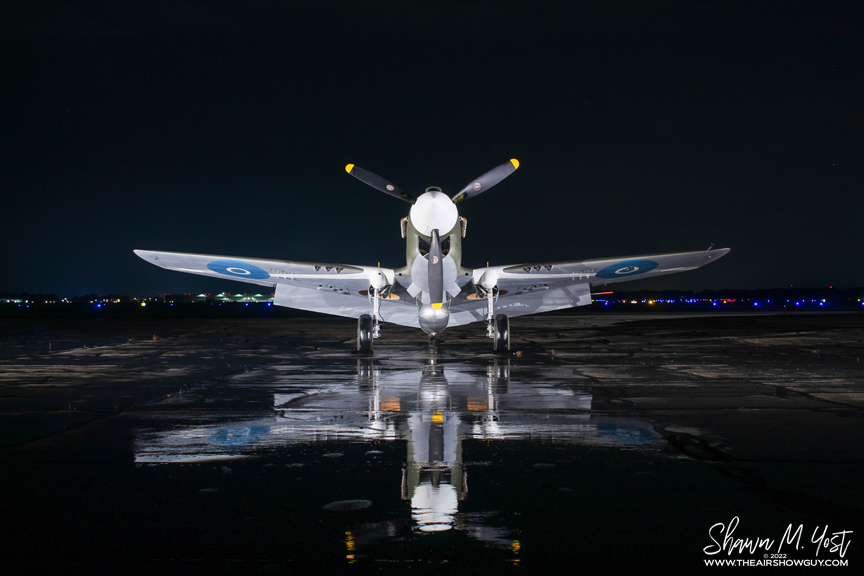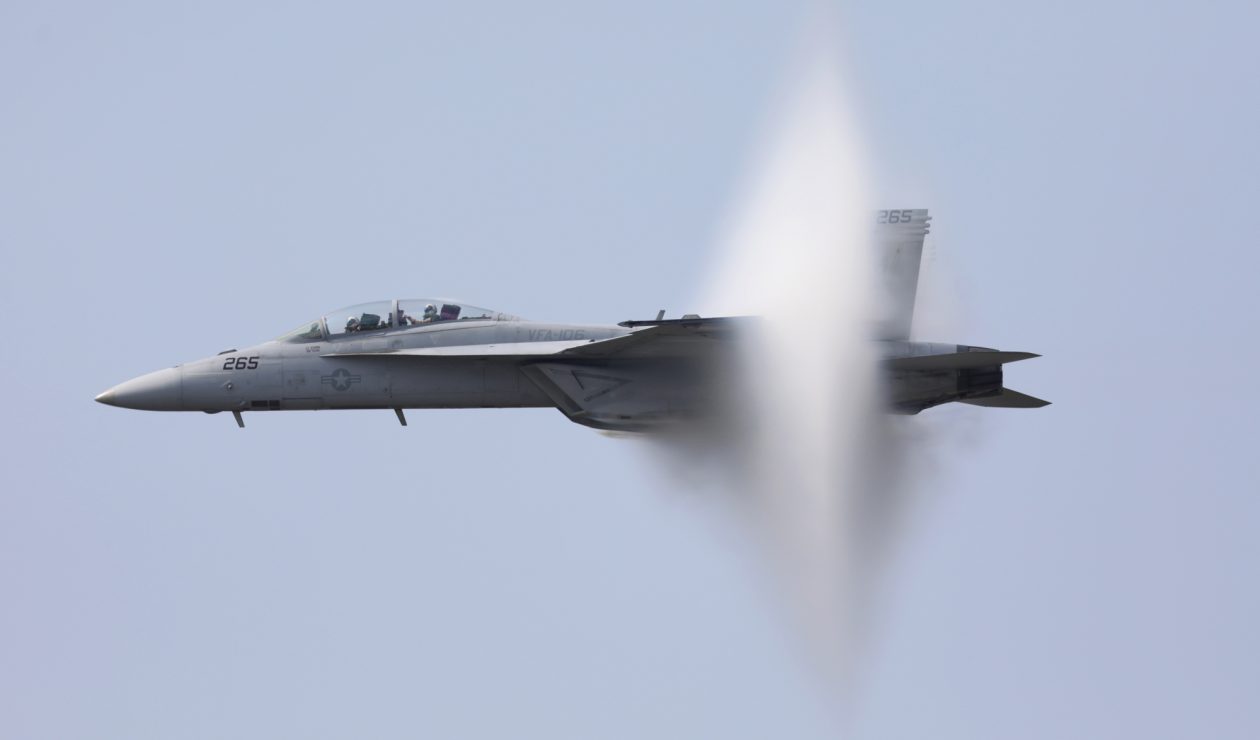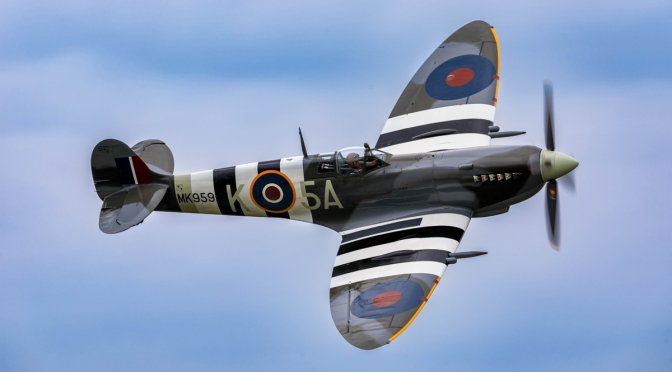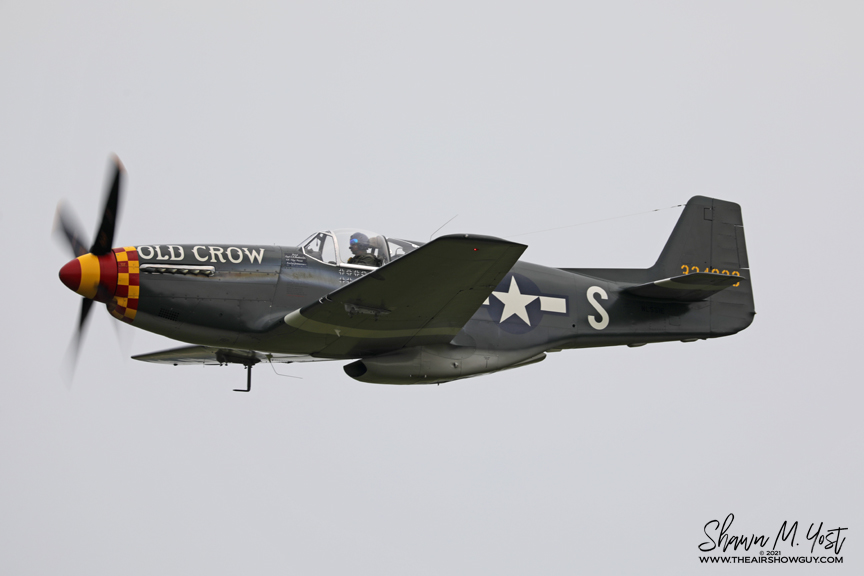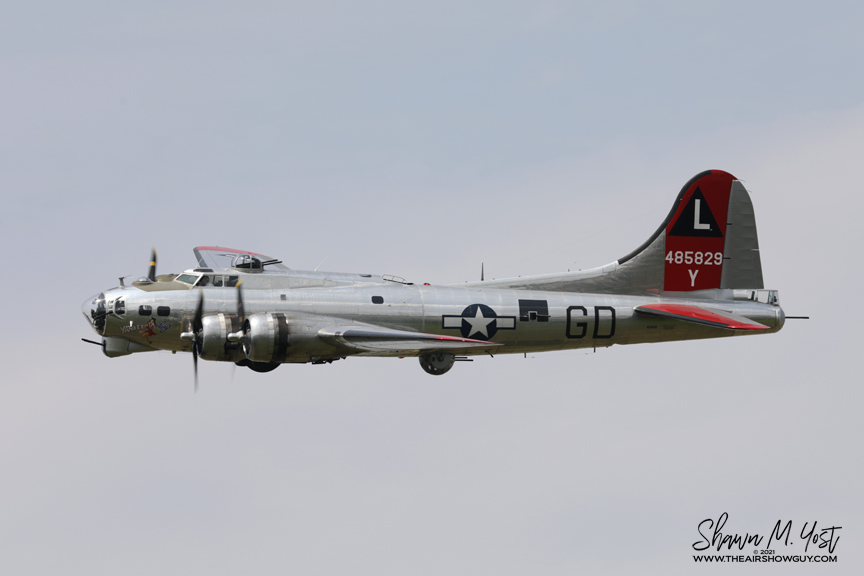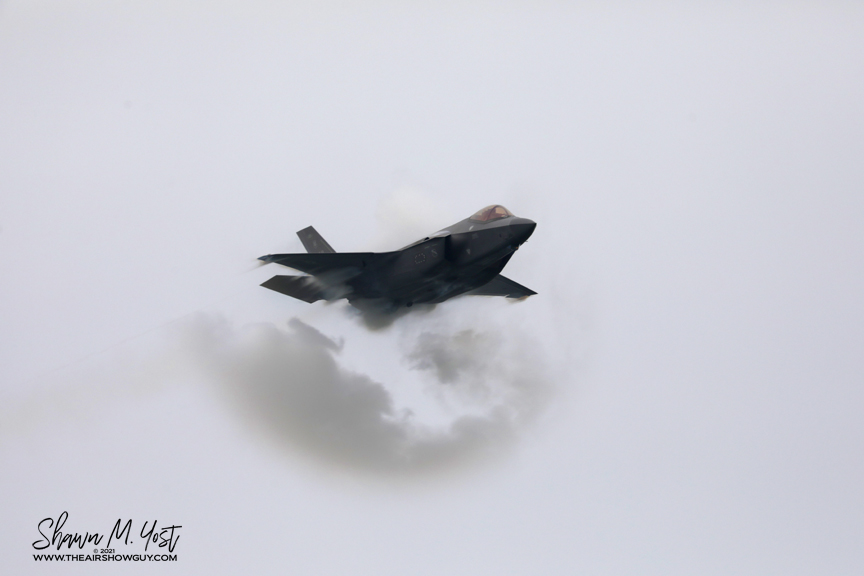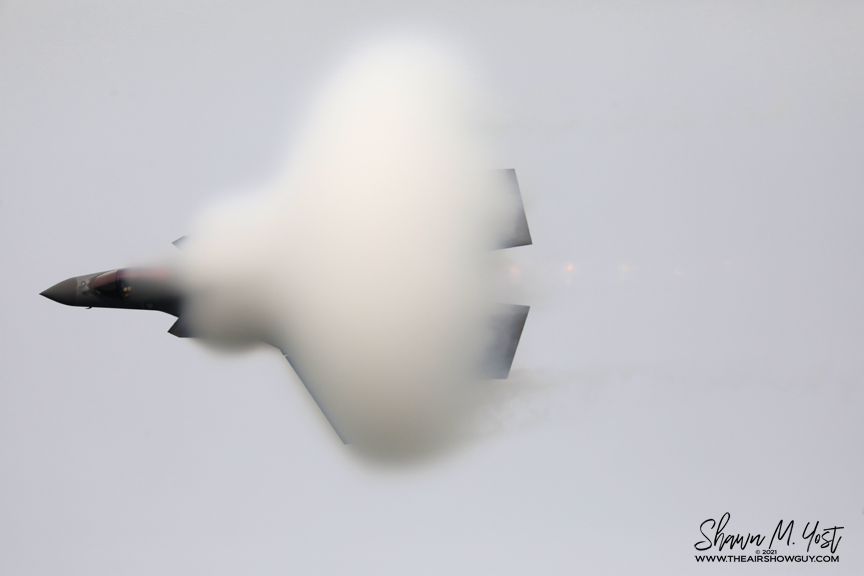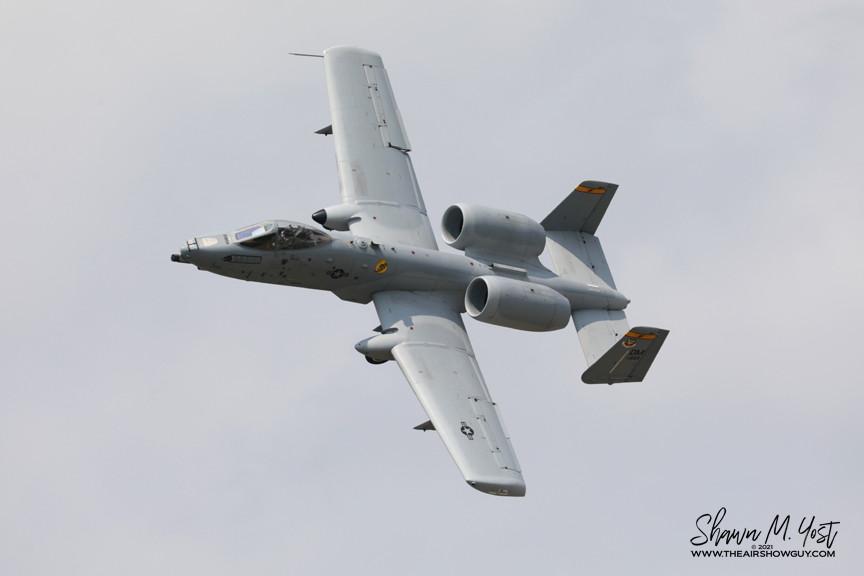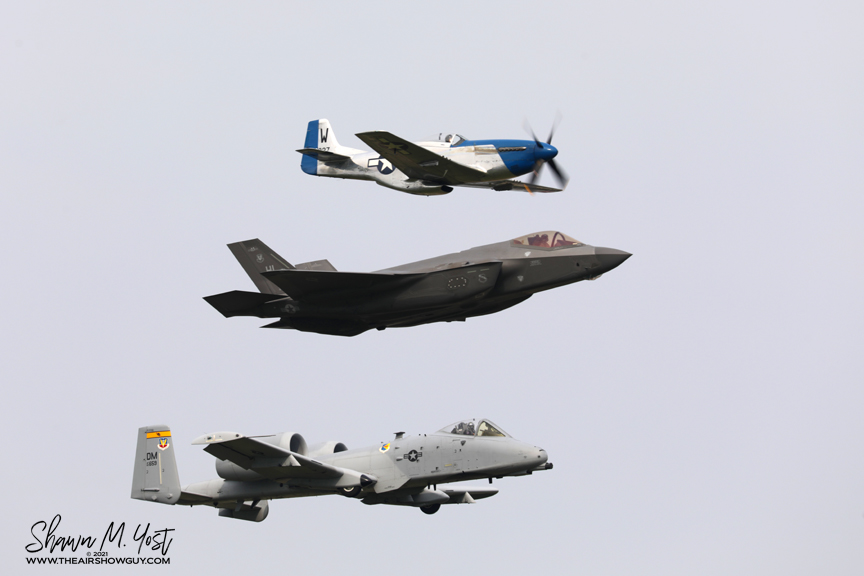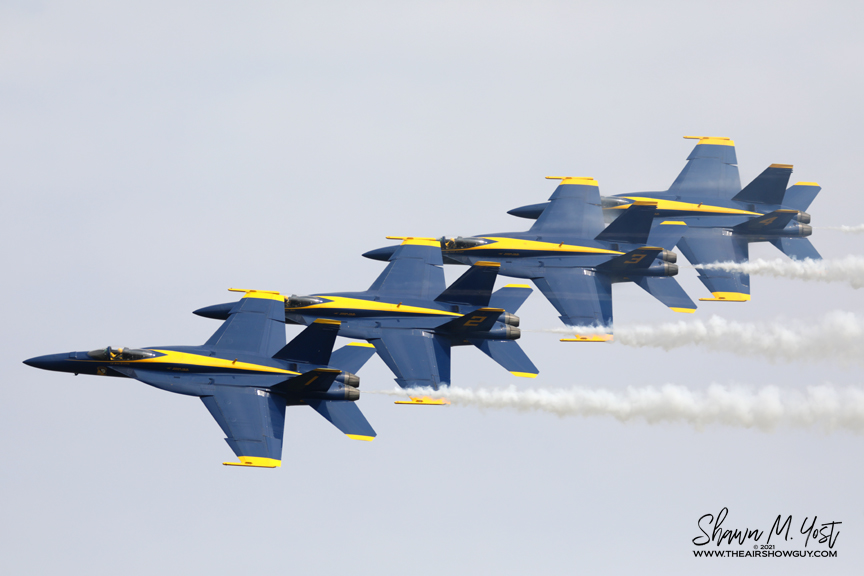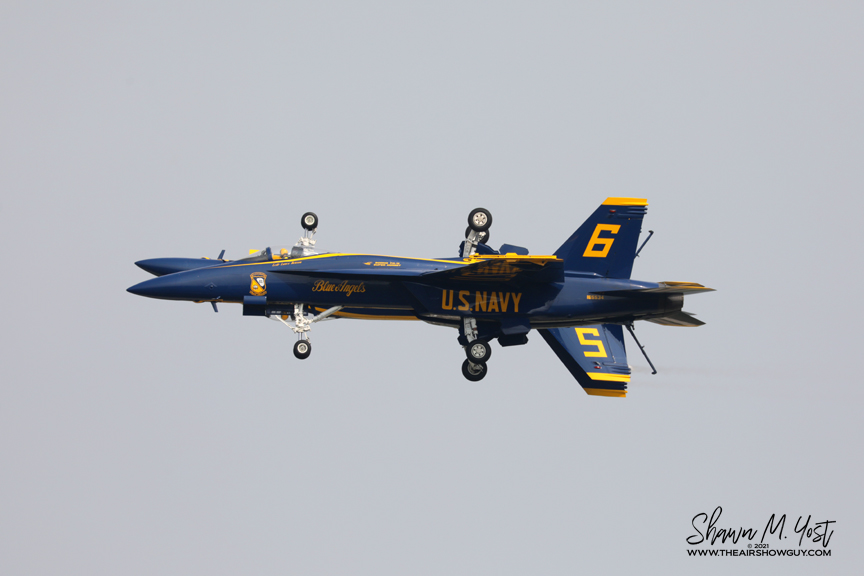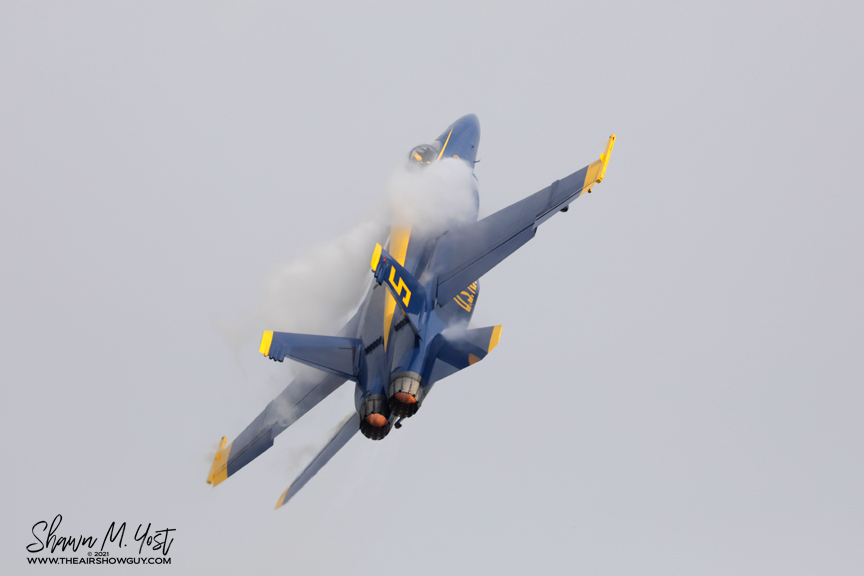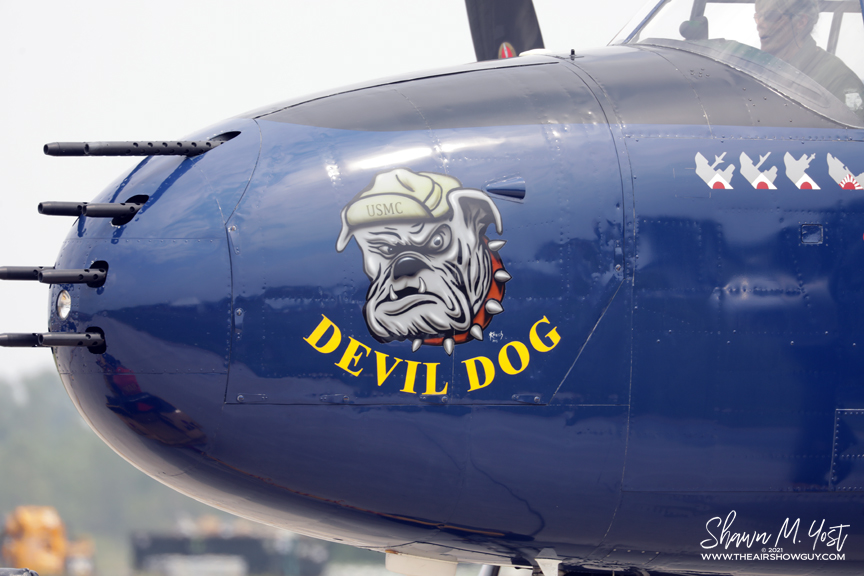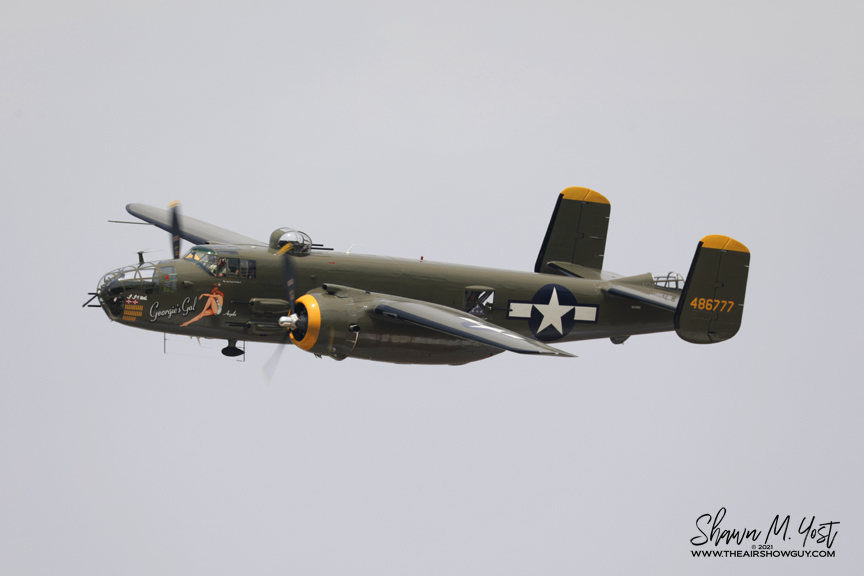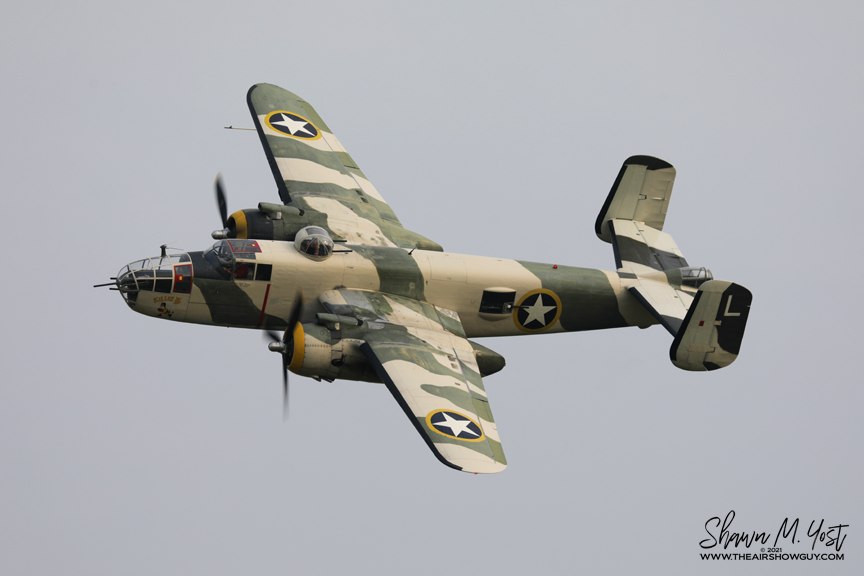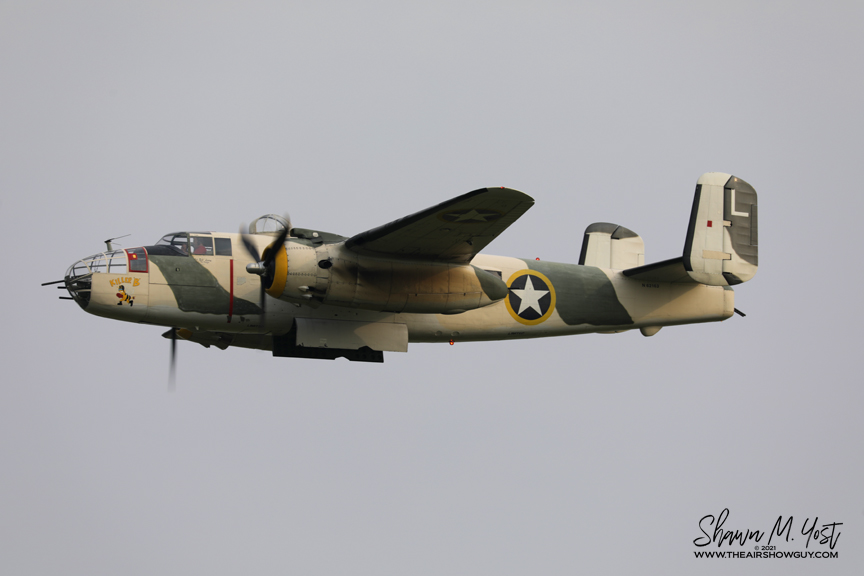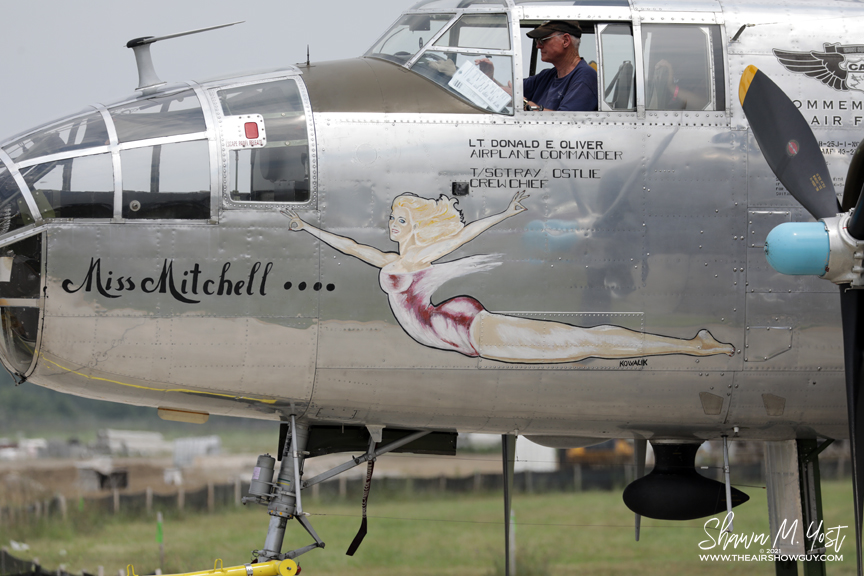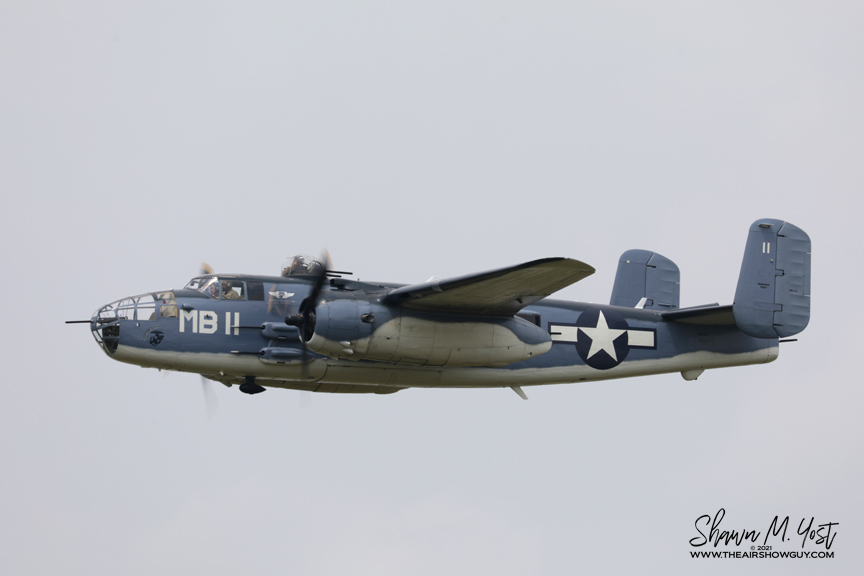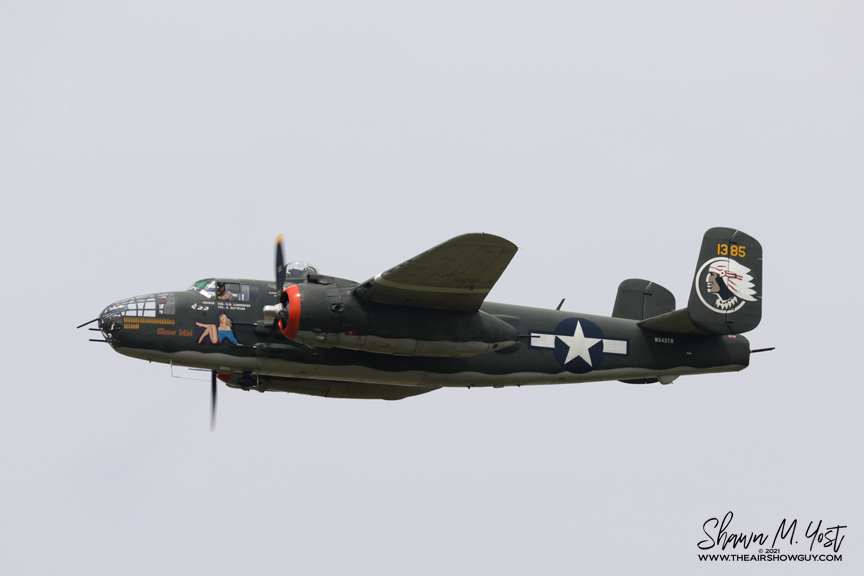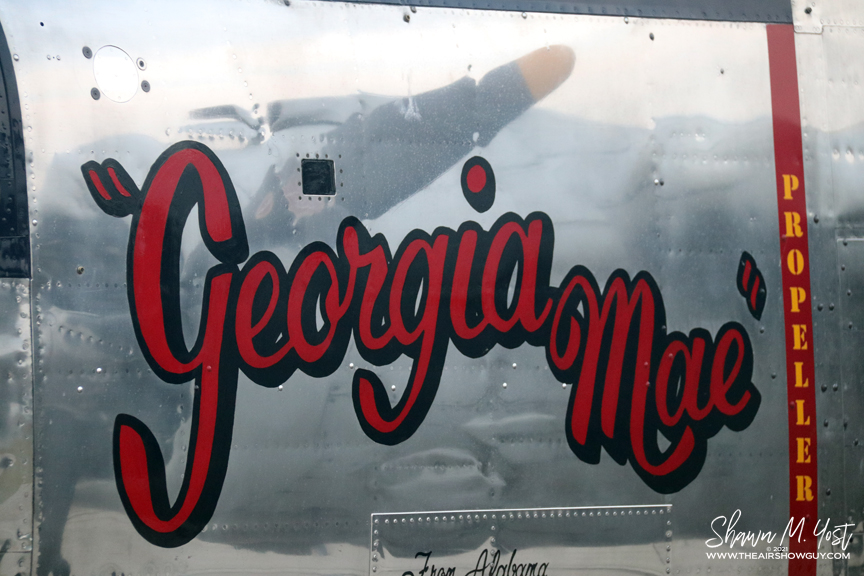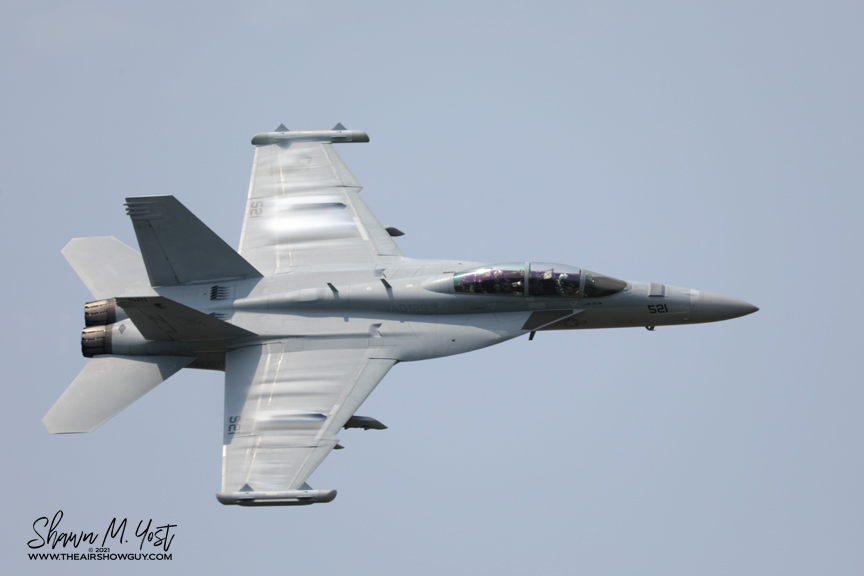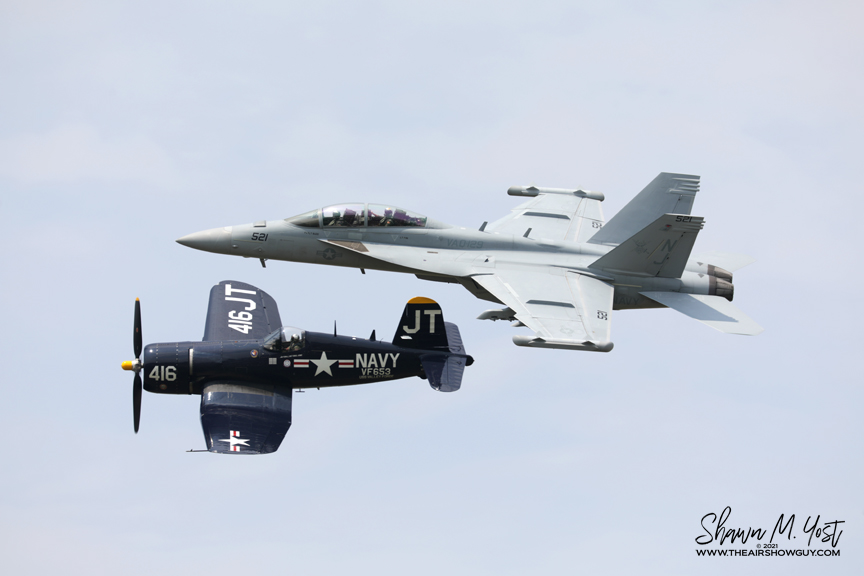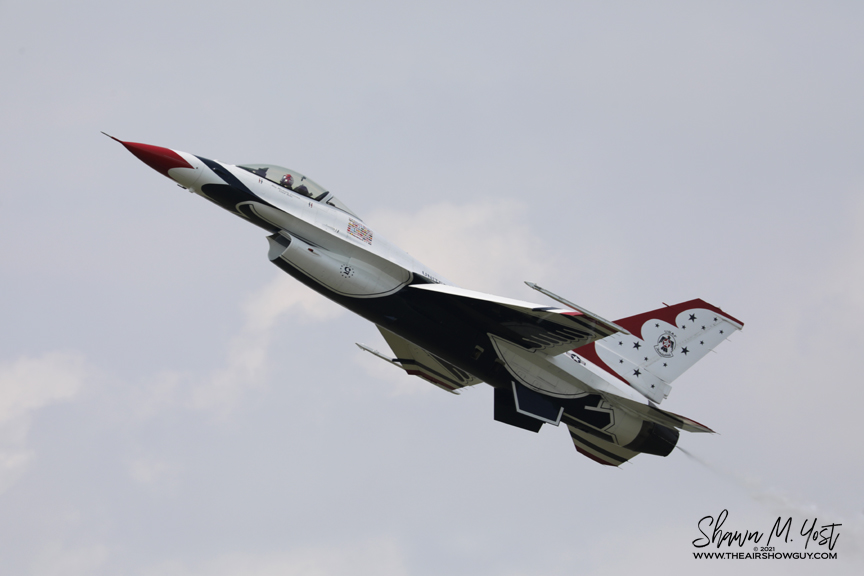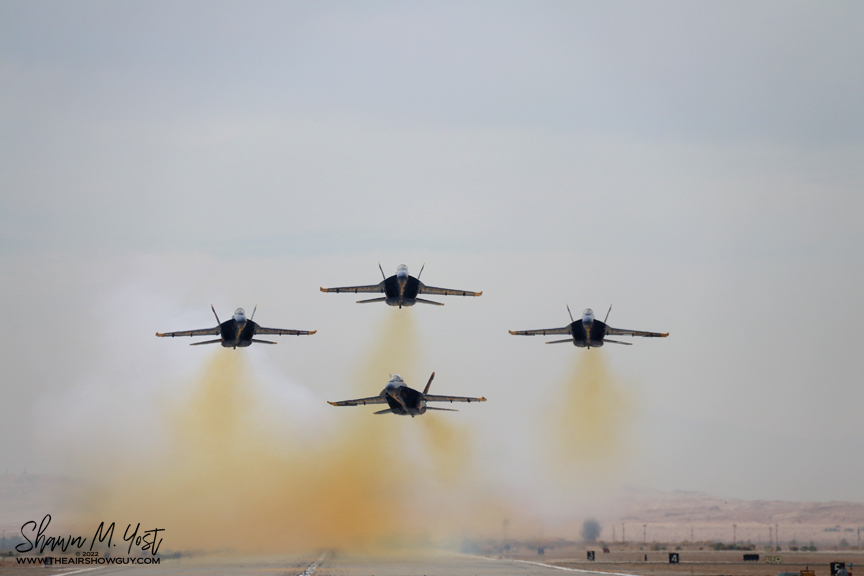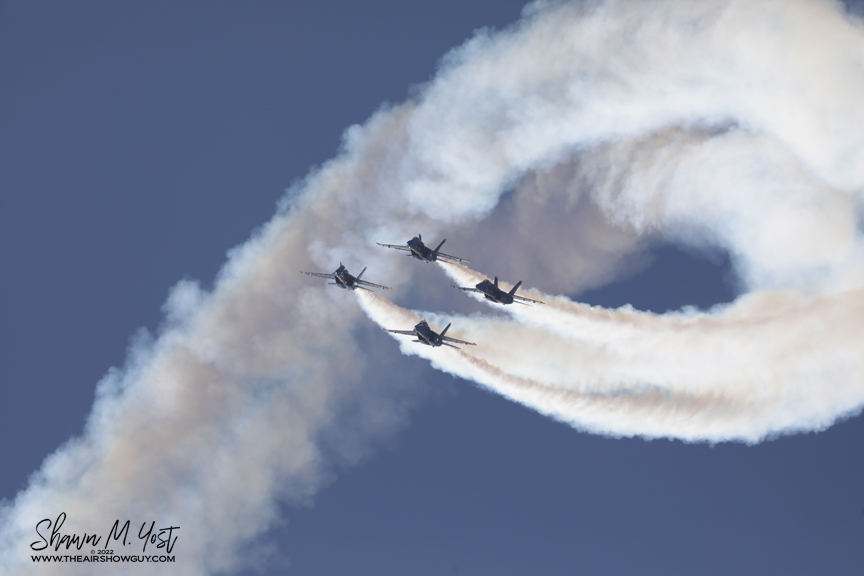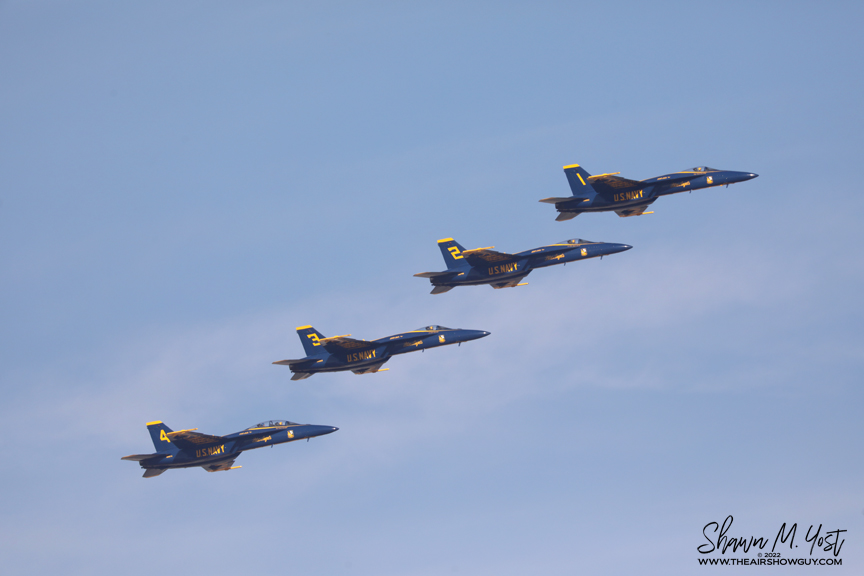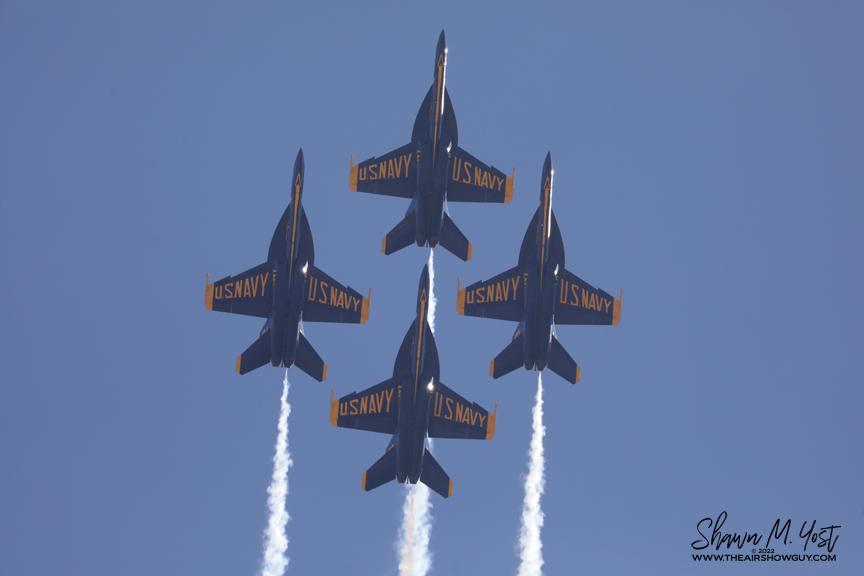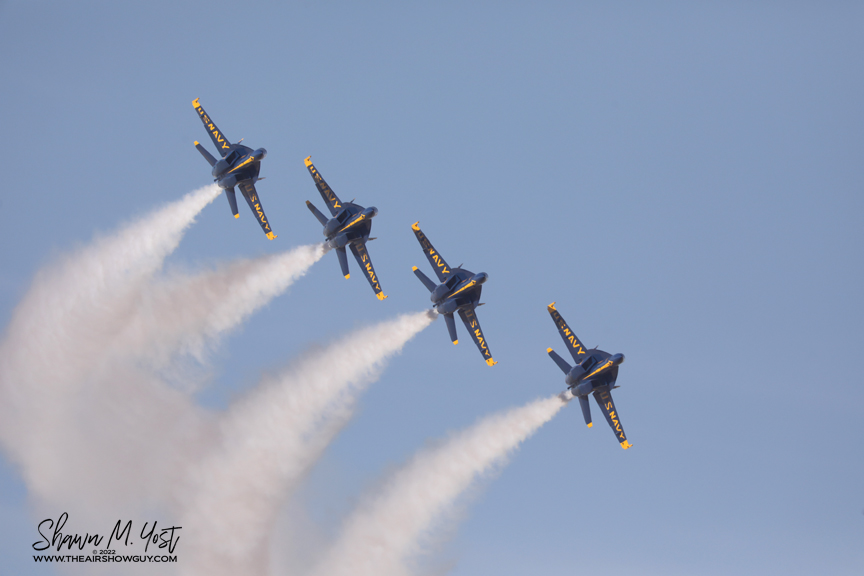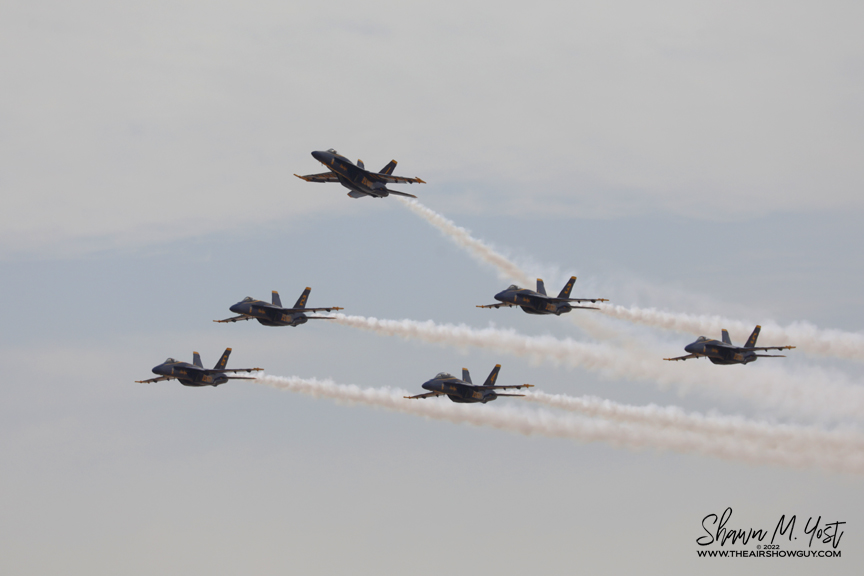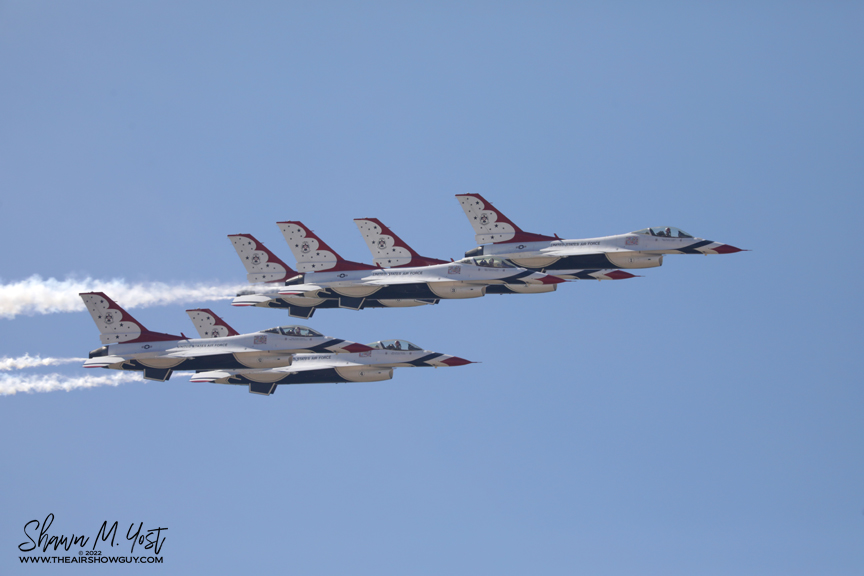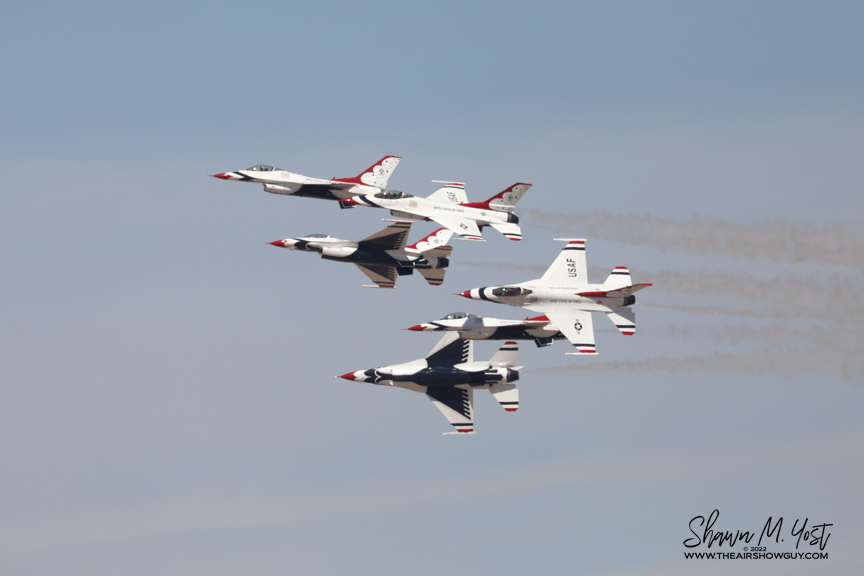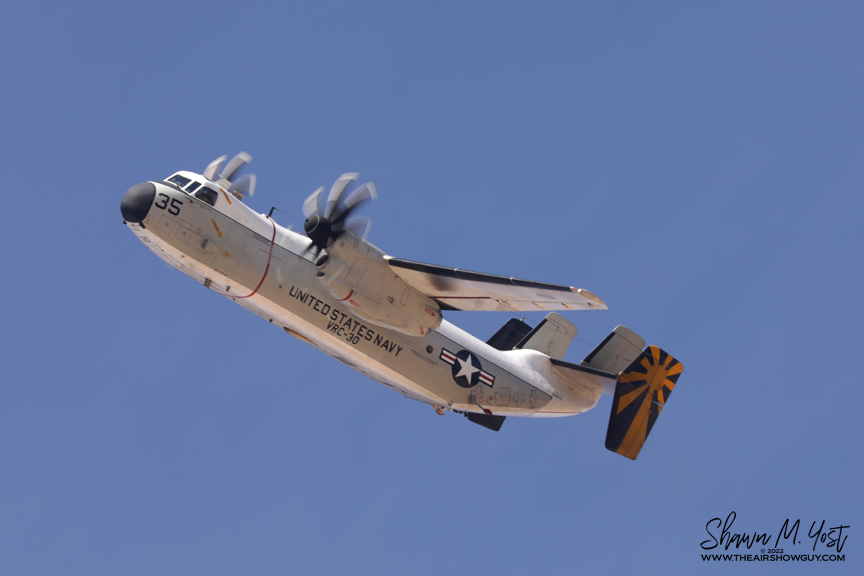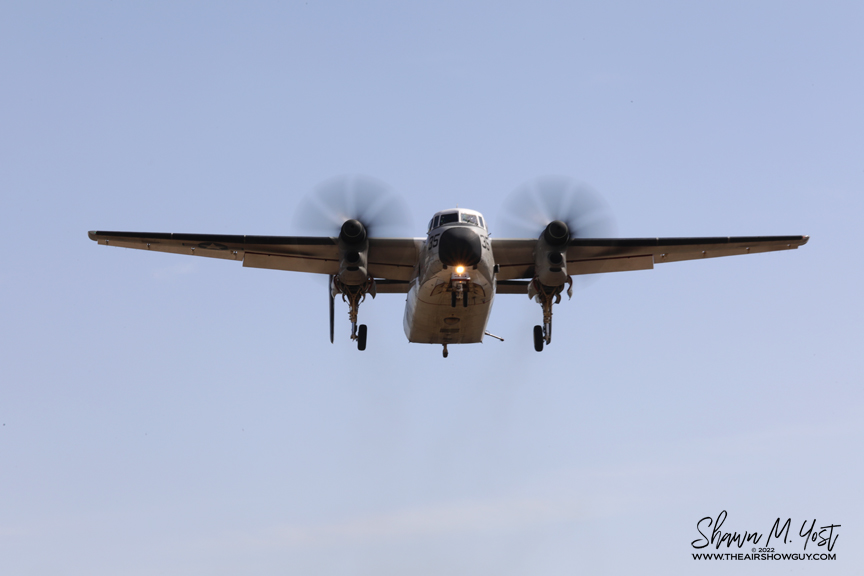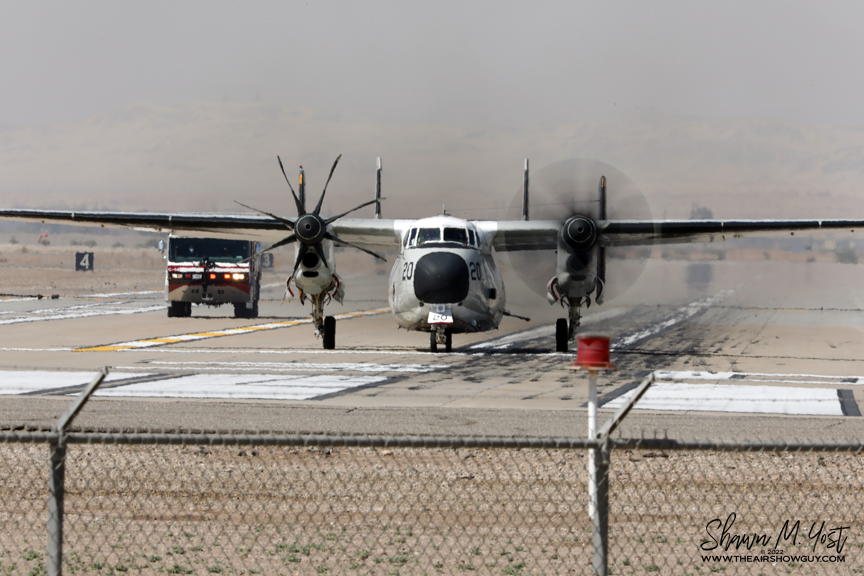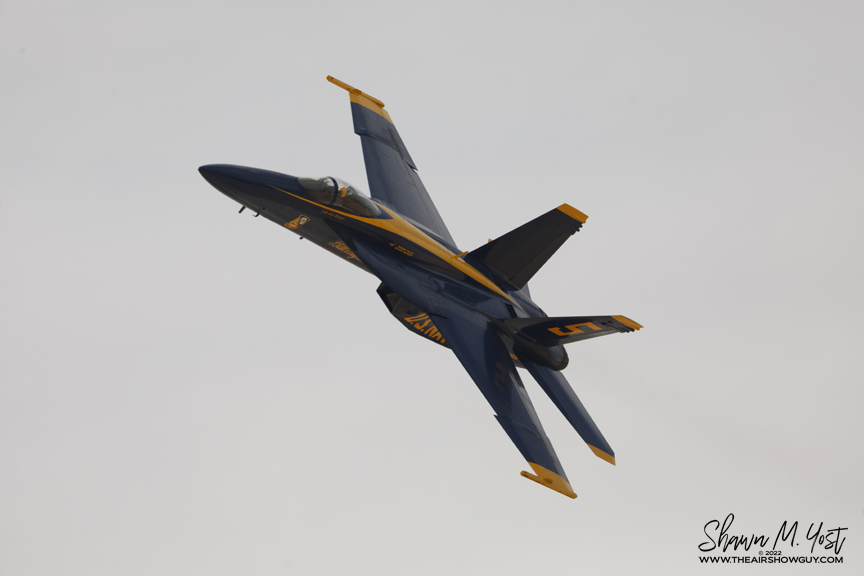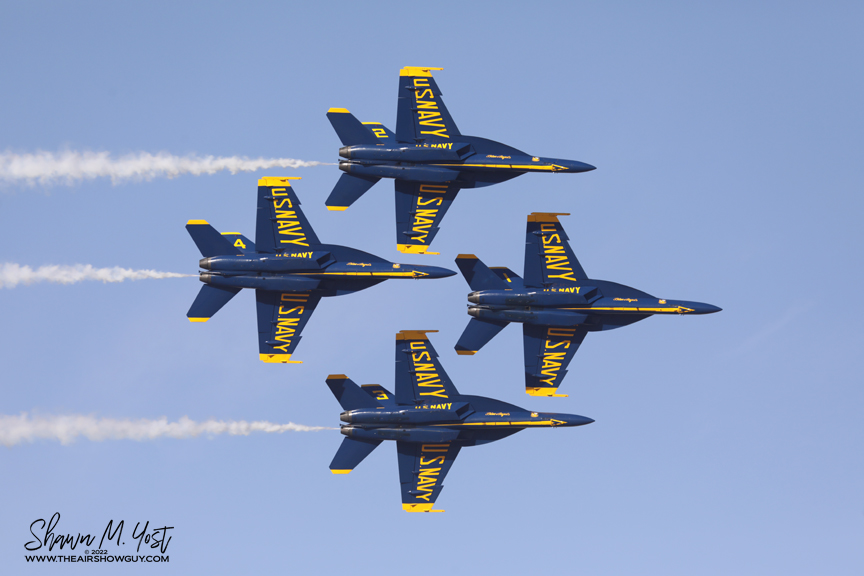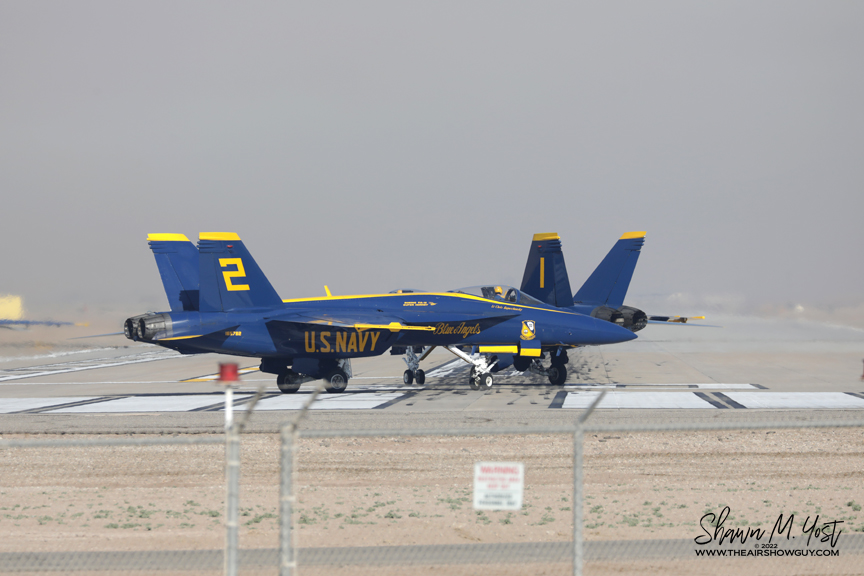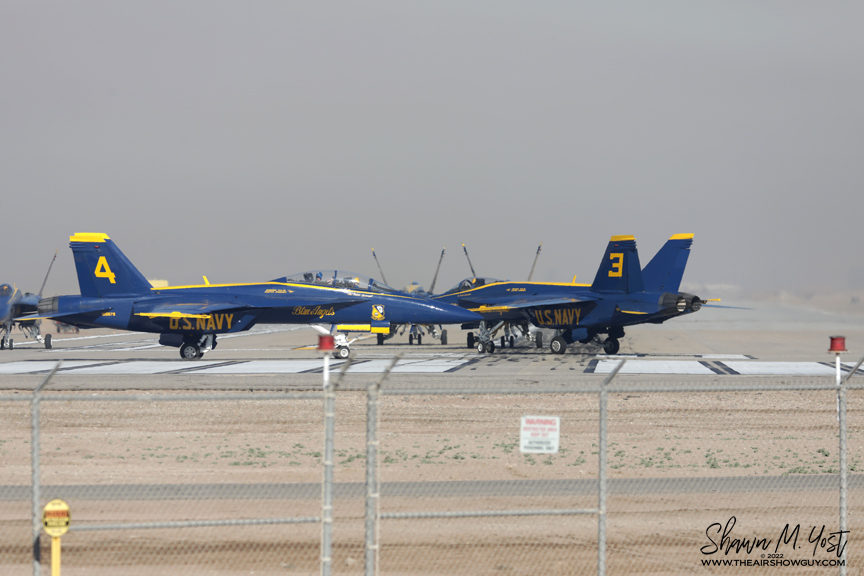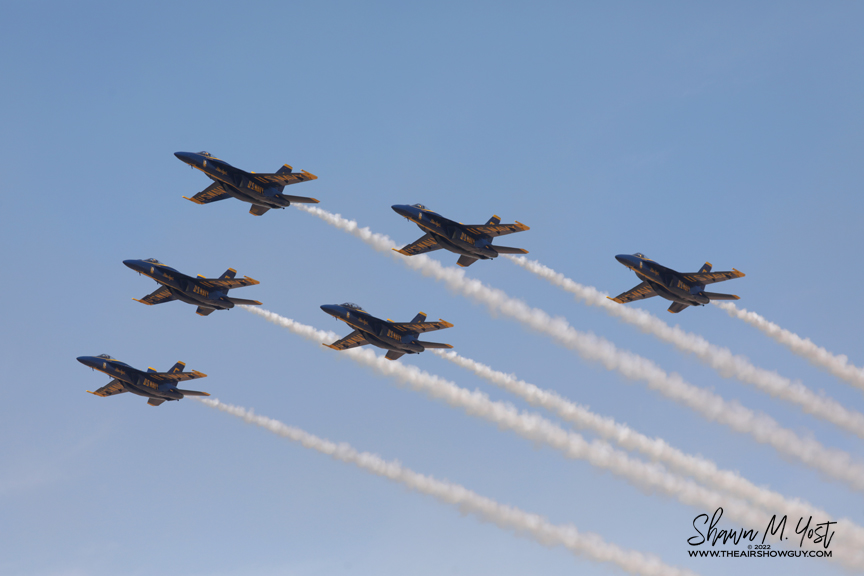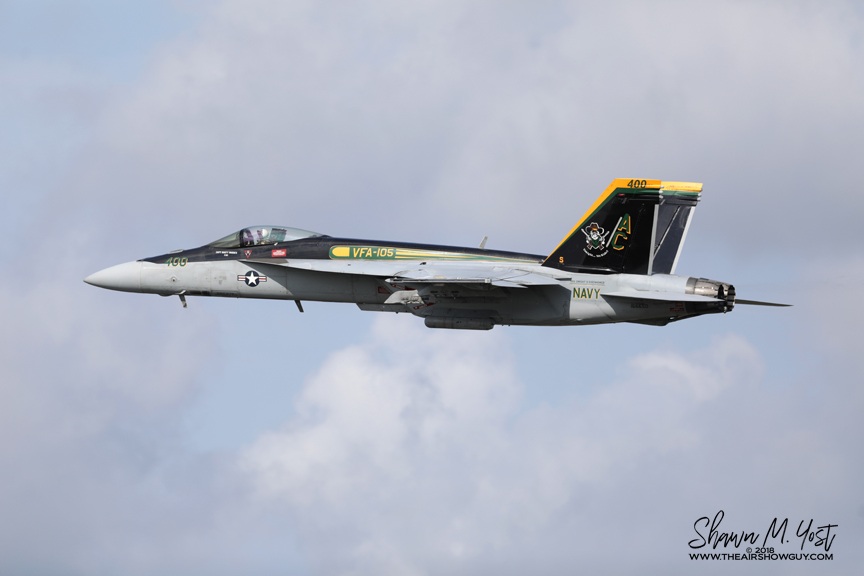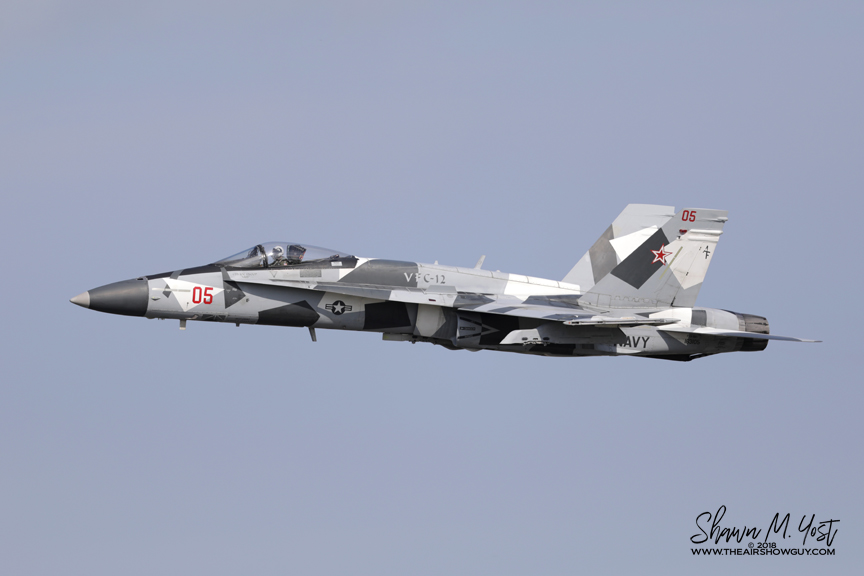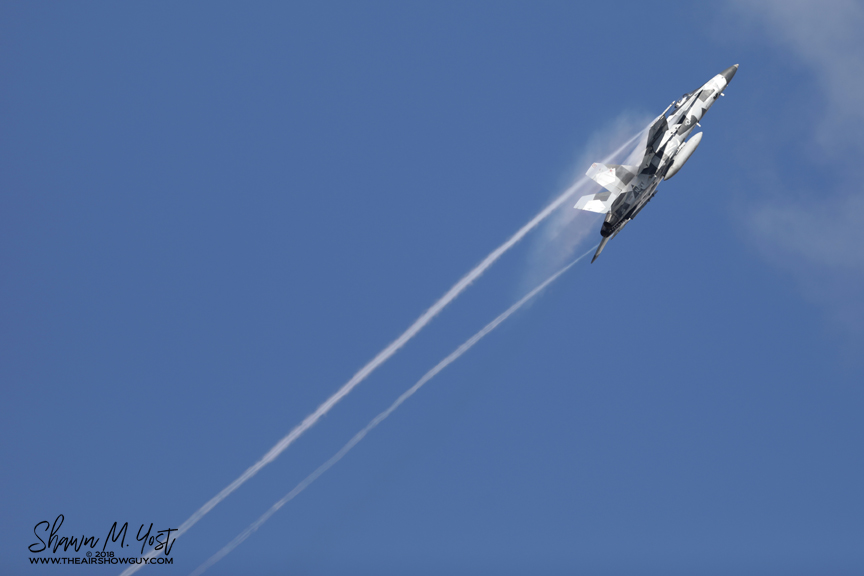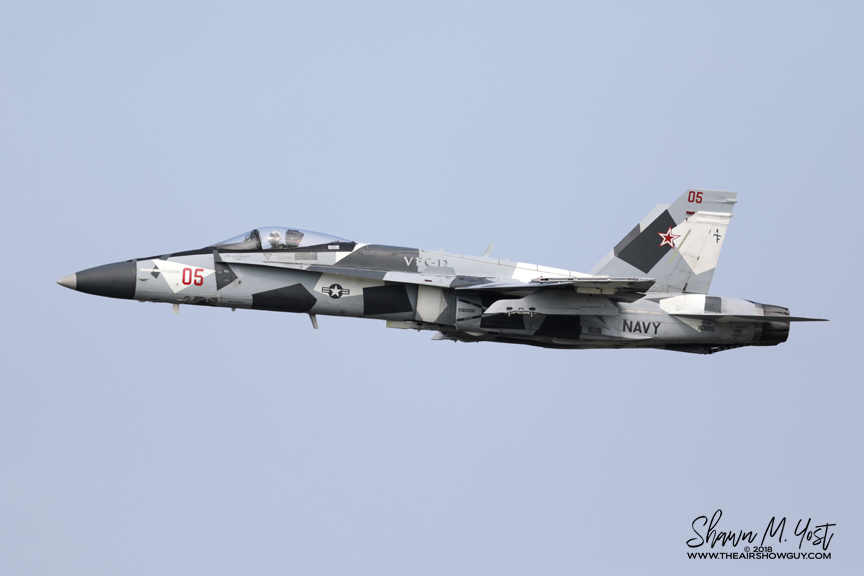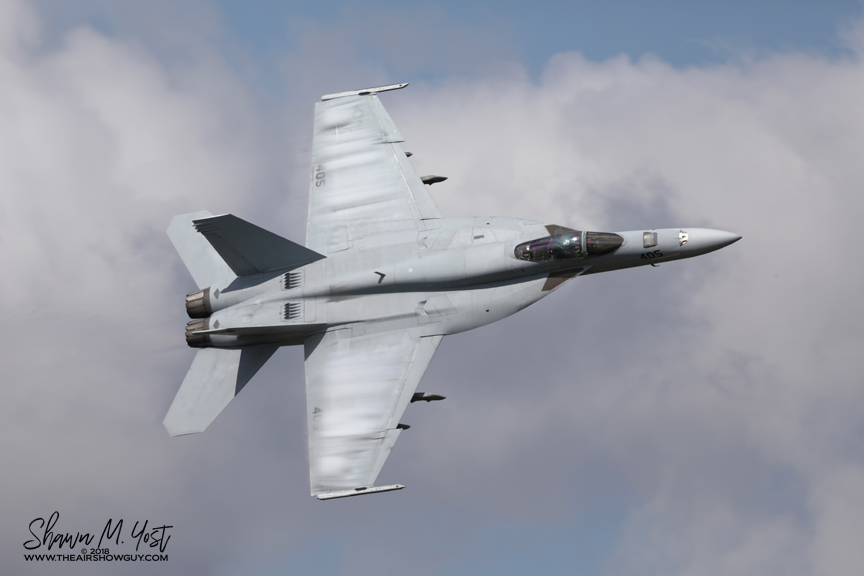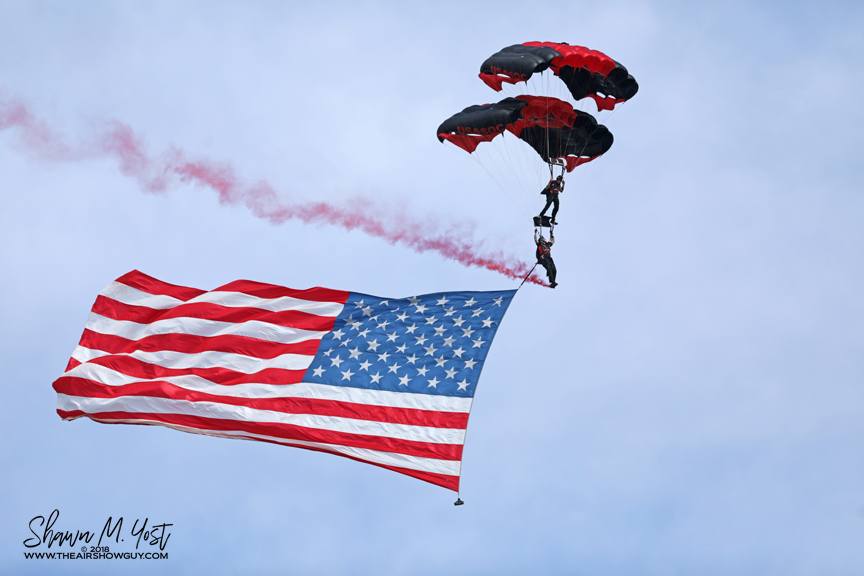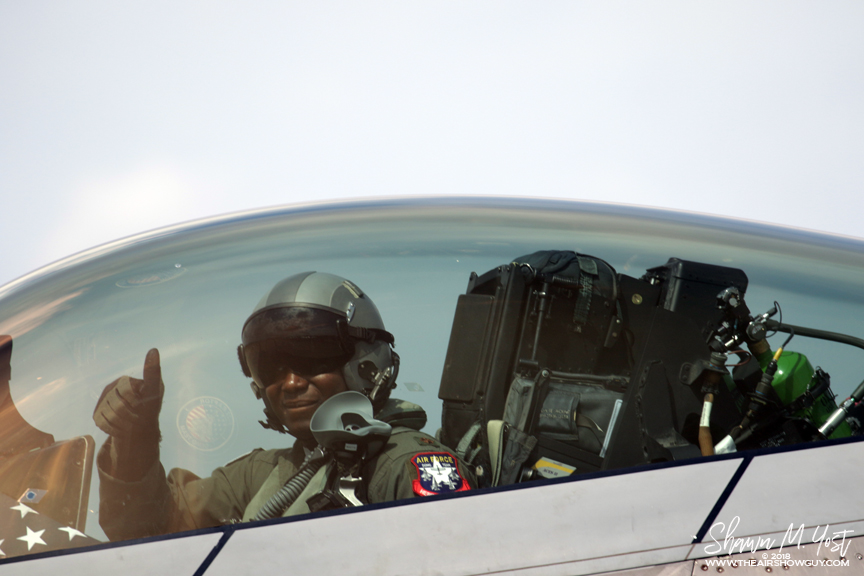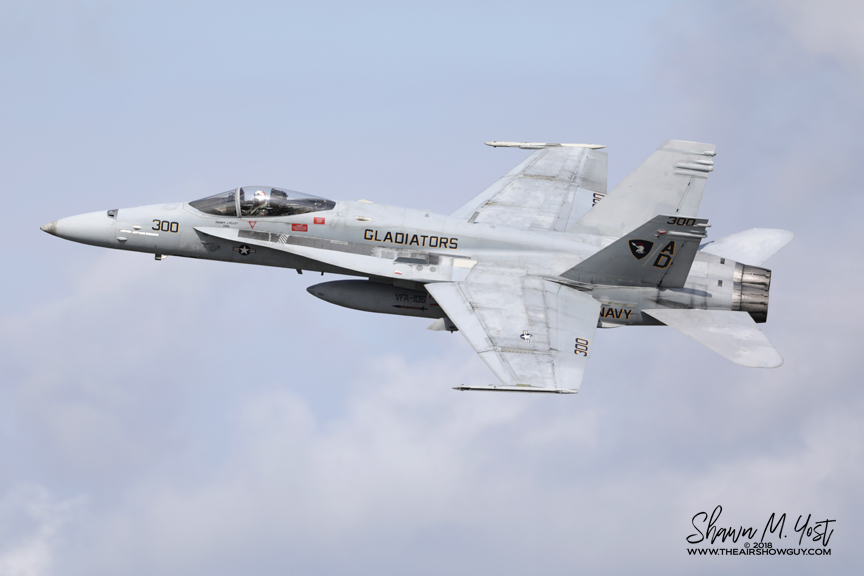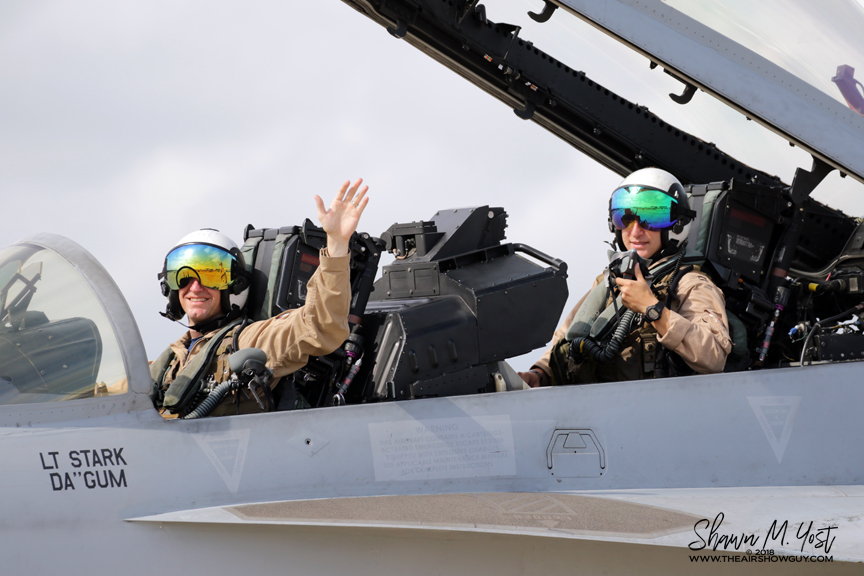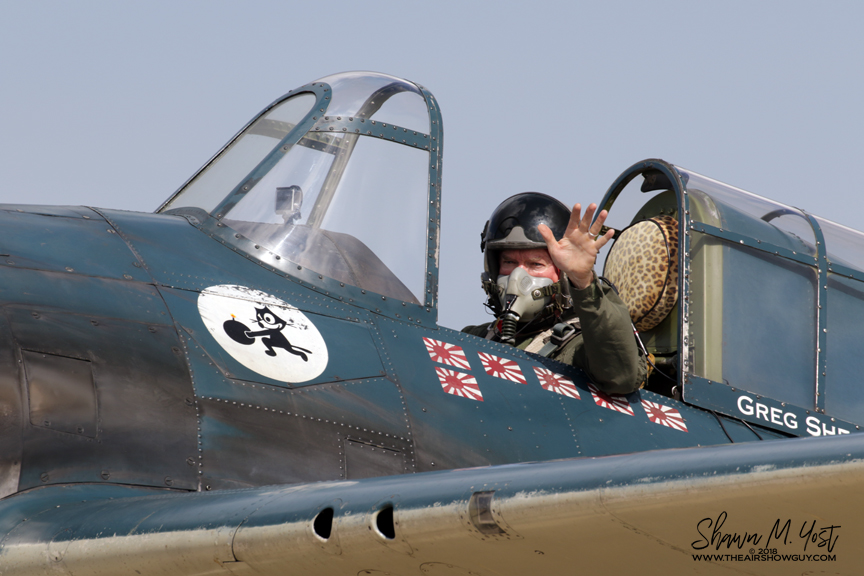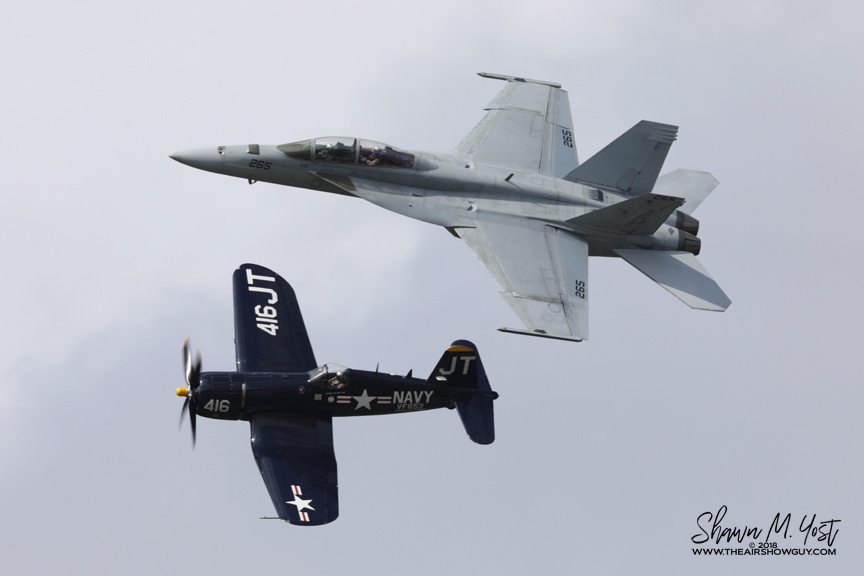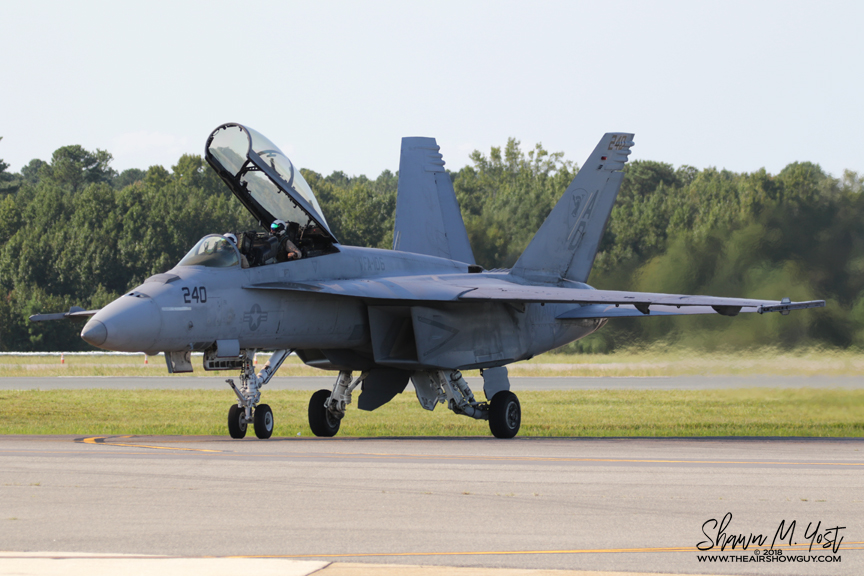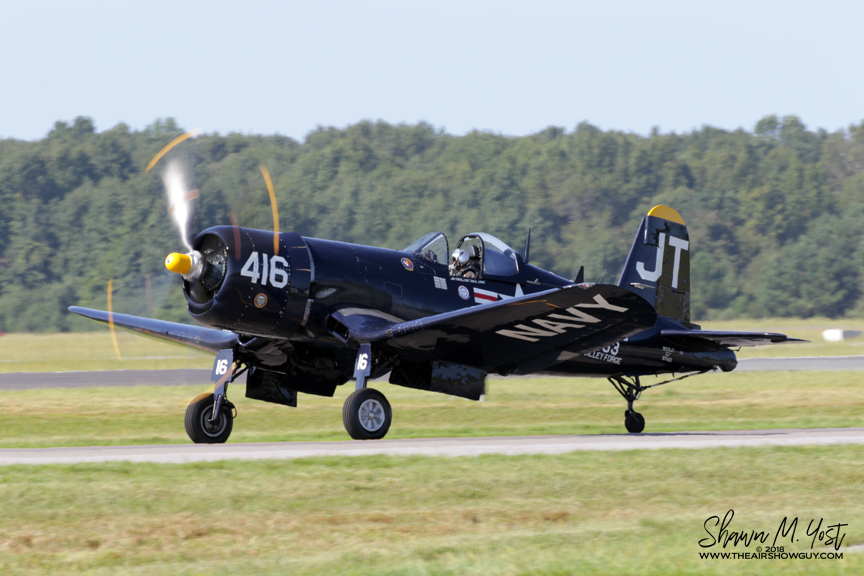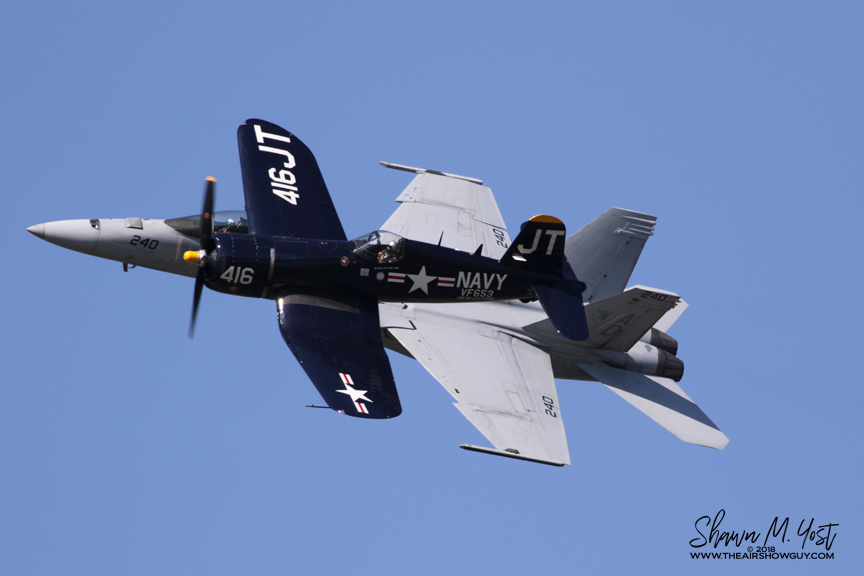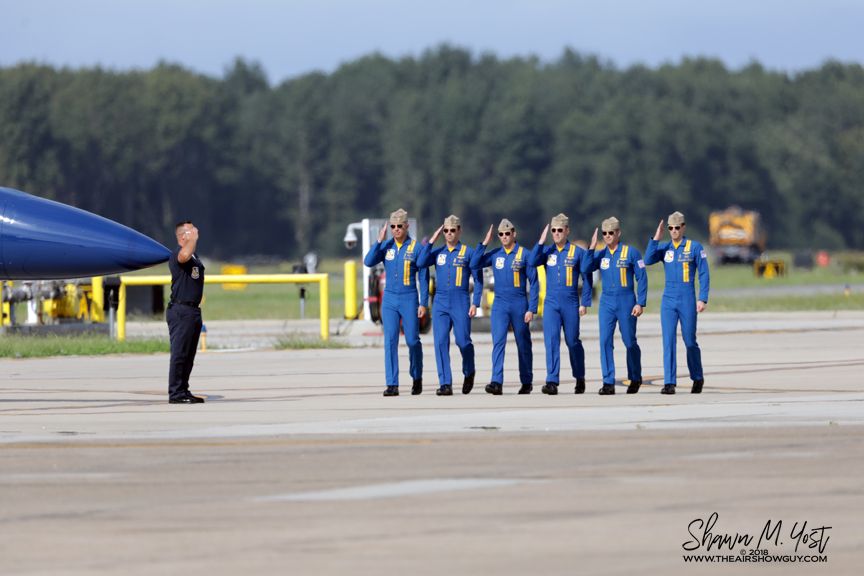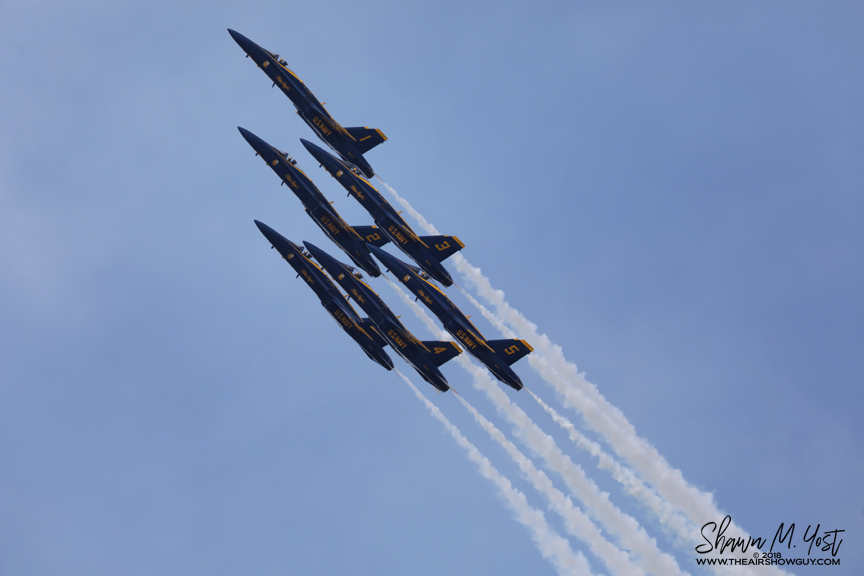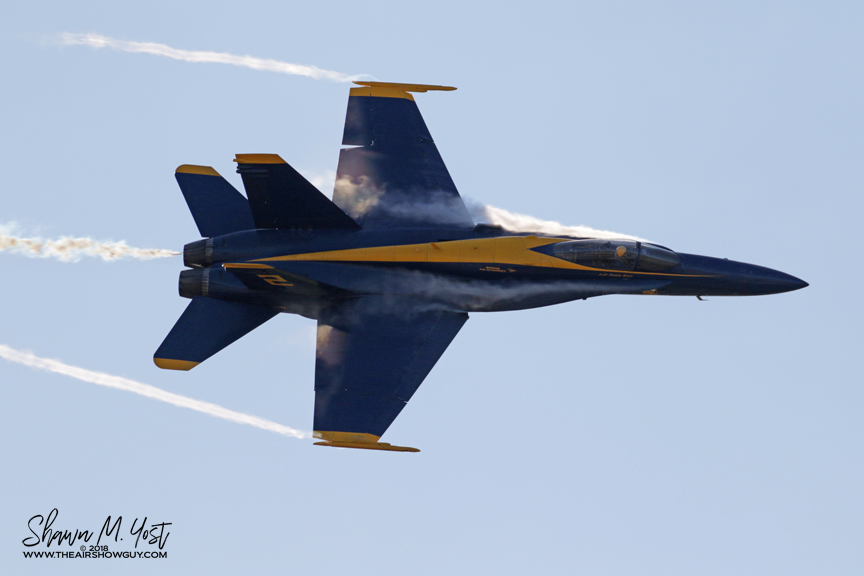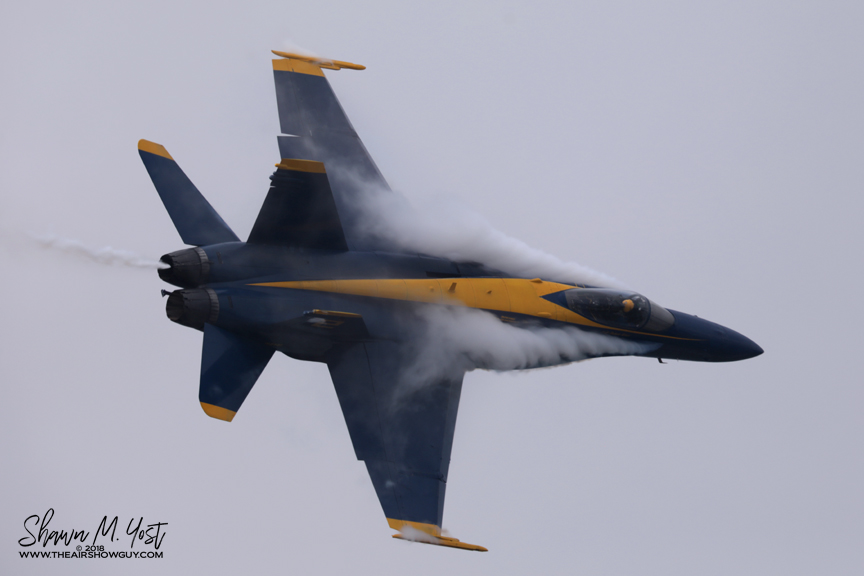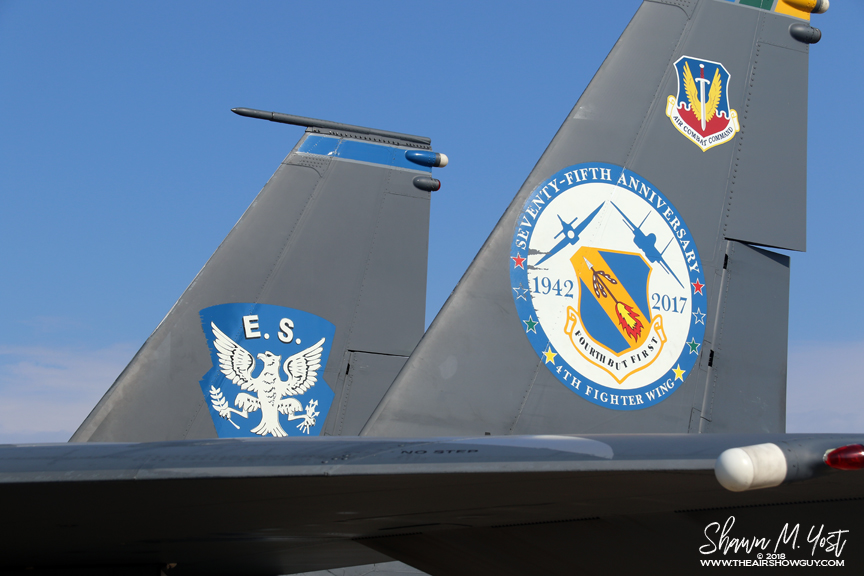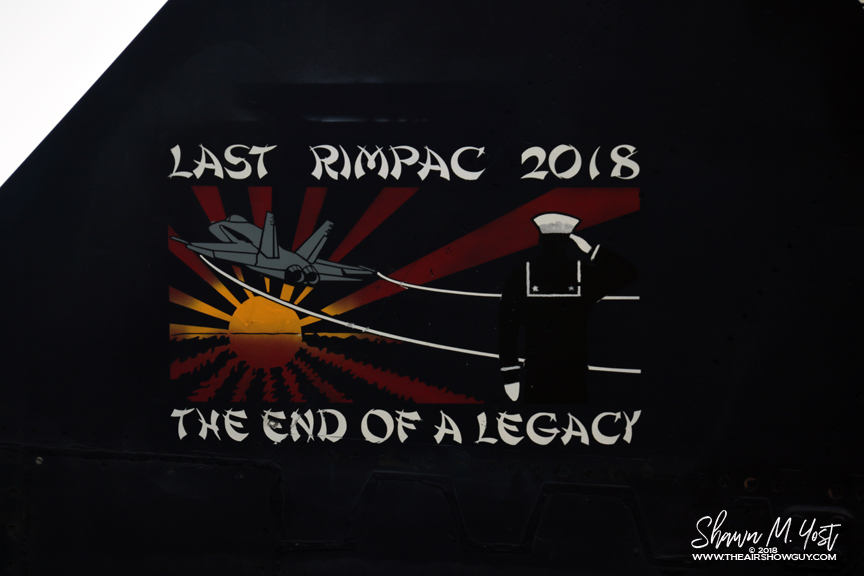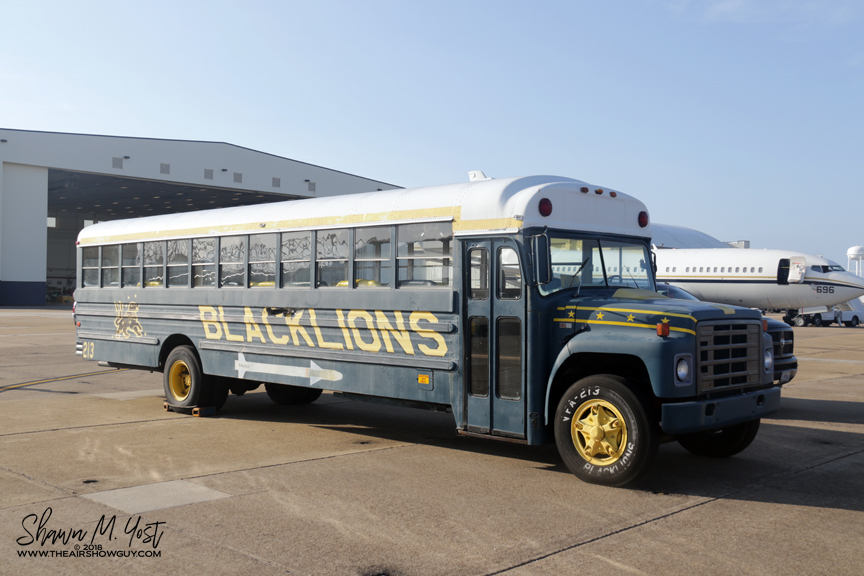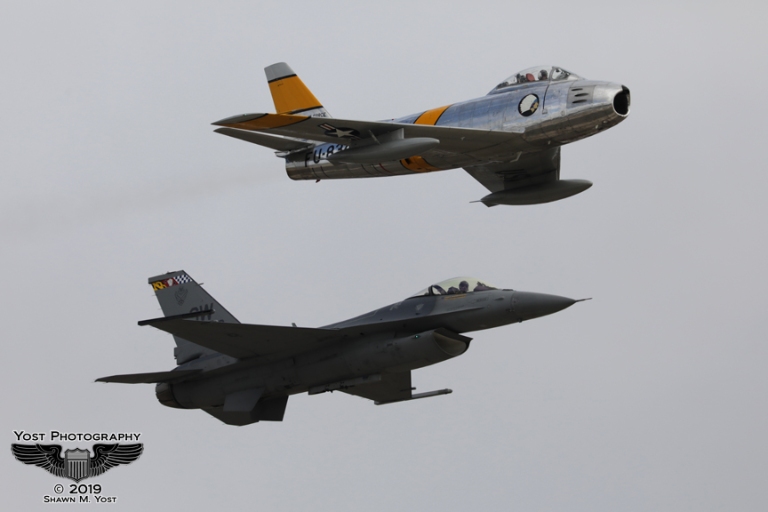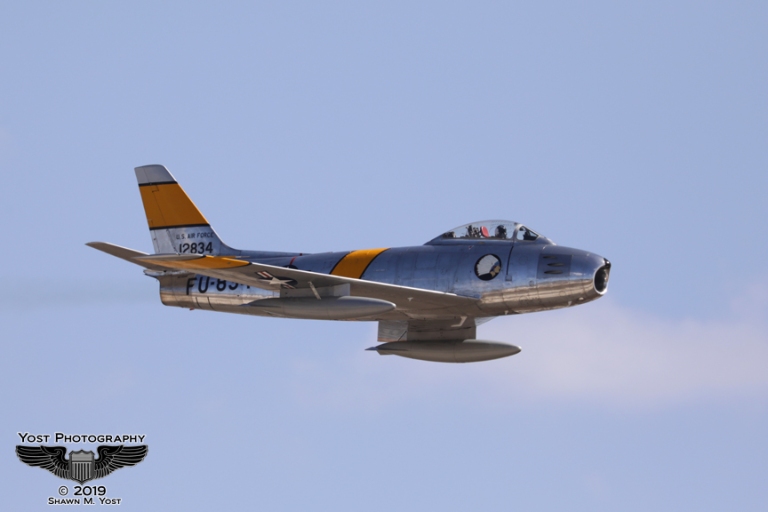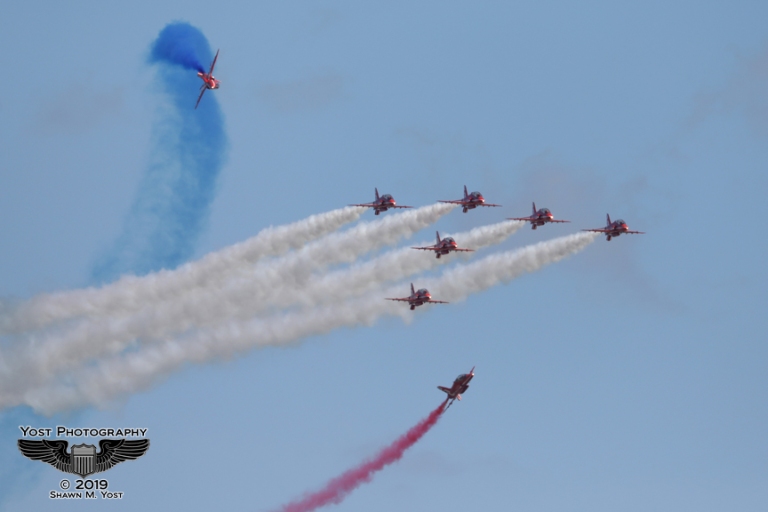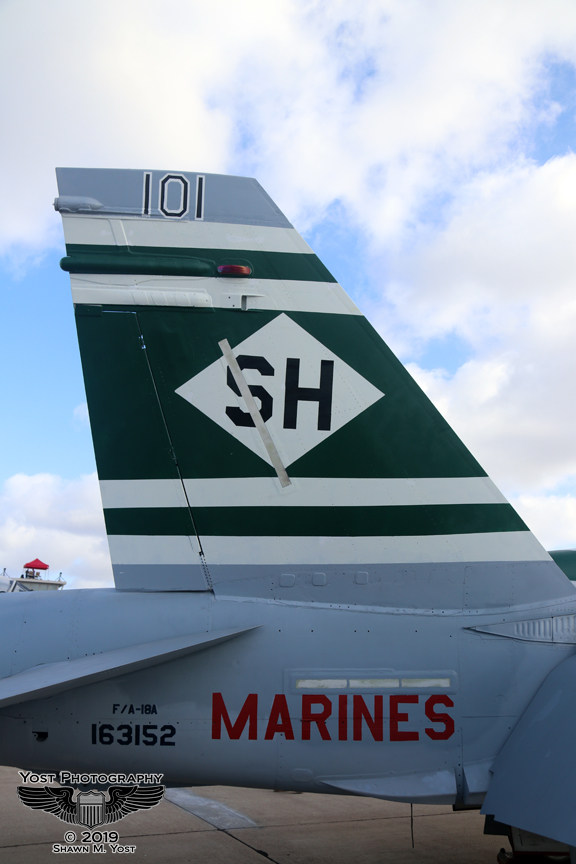The Thunder Over Michigan airshow was held on July 16-17, and featured a wide variety of which included warbird aircraft, military demonstrations and headlined by the US Navy Blue Angels.
Similar to 2021, the event was a “drive in” style show with people parking in the spot they would occupy on the airshow grounds. The theme of the show was “the British are coming!” A number of British aircraft were scheduled to appear, however large thunderstorm cells across the United States and mechanical issues prevented many of the aircraft from coming in. Thankfully, several flying museums answered the cry for help and provided additional airframes to fill the show.
Louis Horschel FG-1D Corsair
No stranger to Thunder Over Michigan, Lou Horschel returned in his FG-1D Corsair to start off each day with an aerobatic performance. The airframe is former bureau number 88090 and is now registered as NZ5612. The aircraft served in World War II with the New Zealand Air Force in No. 14 and No. 17 squadrons. It was rescued from the scrap yard in 1972. She wears the standard US Navy dark sea blue paint scheme and US rondels but lacks any squadron insignia.


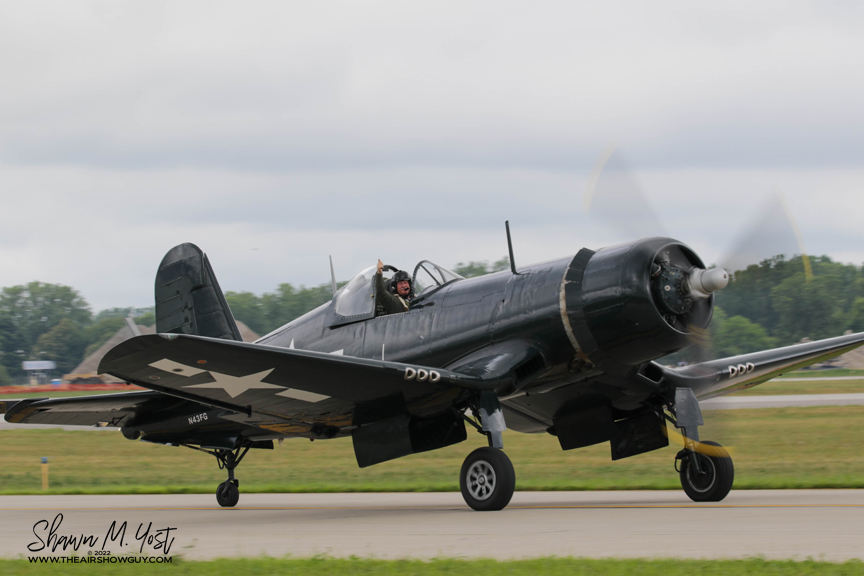
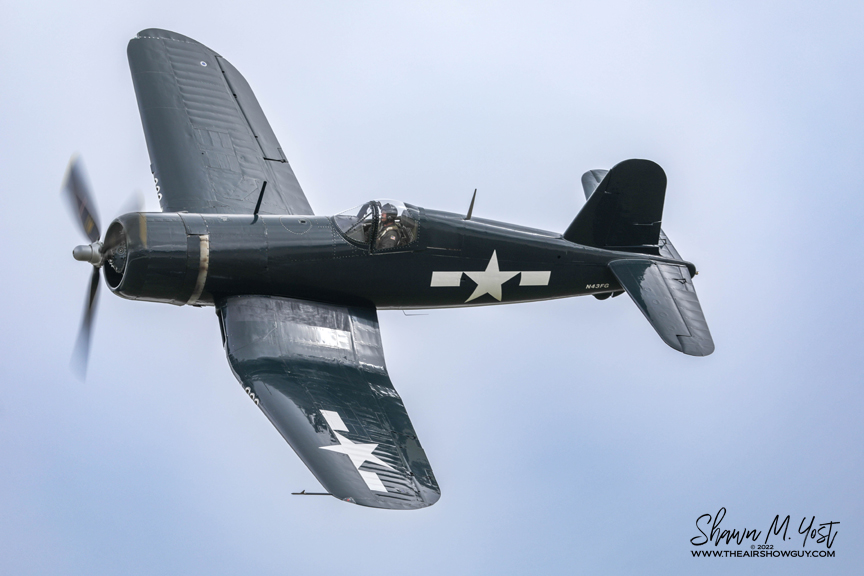
Dean “Cutter” Cutshall F-100F Super Sabre
This aircraft is likely to be my current favorite jet warbird. The “Hun” as the Super Sabre was nicknamed, was America’s first aircraft capable of sustained super sonic flight. Dean’s version was built in 1958 as 56-3948, and is a two-seat variant. She flew in various roles for the USAF until 1973 when she was transferred to the Turkish Air Force. In Turkey, she saw combat in the invasion of Cyprus and was eventually retired to the desert in Turkey where she sat idle for 10 years. She was sold by the Turks and eventually brought back to the United States who intended to restore it. The owner failed to have the work done and eventually sold it to Dean. He and his crew ( Paul Swick and Jim “Prez” Prezbindowski) restored it including a new engine and numerous internal and external updates. She was returned to her USAF livery, although wearing civil registration N2011V. The Hun now resides in Fort Wayne, Indiana and is one of only several known flying examples left in the world. Of those known, Mr. Cutshall’s is the only one that flies regularly.
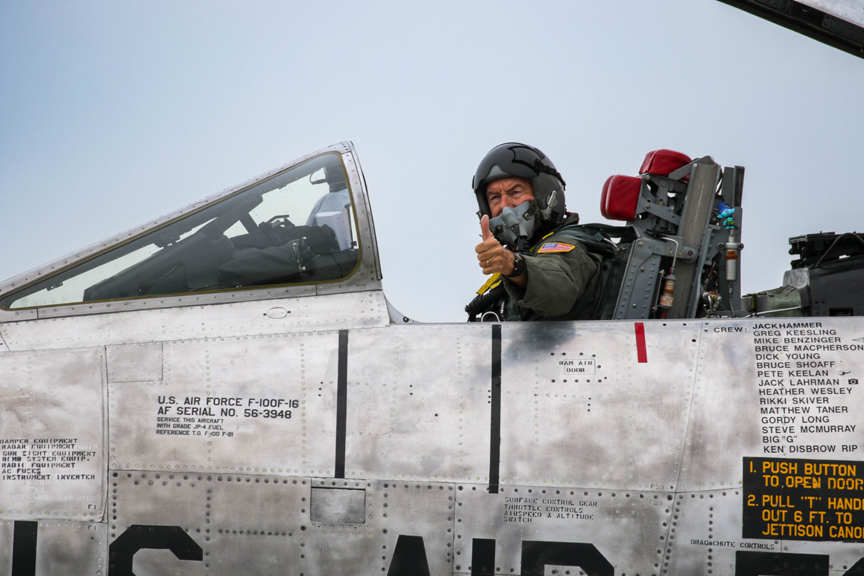

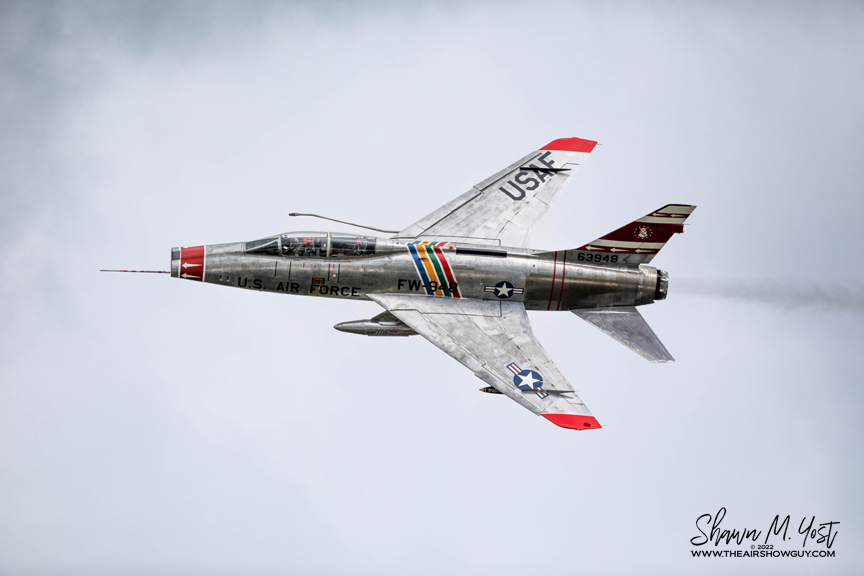



Hurricane Mk. XII
One of the main British fighter aircraft participants in the Battle of Britain was the Hawker Hurricane. Although the “fame” goes to the Spitfire, the Hurricane was used effectively to repel the German Luftwaffe advances. The Hurricane, much like the American P-40, was used in nearly every theatre of operations that the British Commonwealth fought. The airframe was modified over the years to accommodate different types of armament.
This version, a Mk. XII belongs to the Dakota Air Museum and was piloted by Bernie Vasquez. The museum’s Hurricane is painted in the “tropical” camouflage of the Mediterranean theatre of operations.





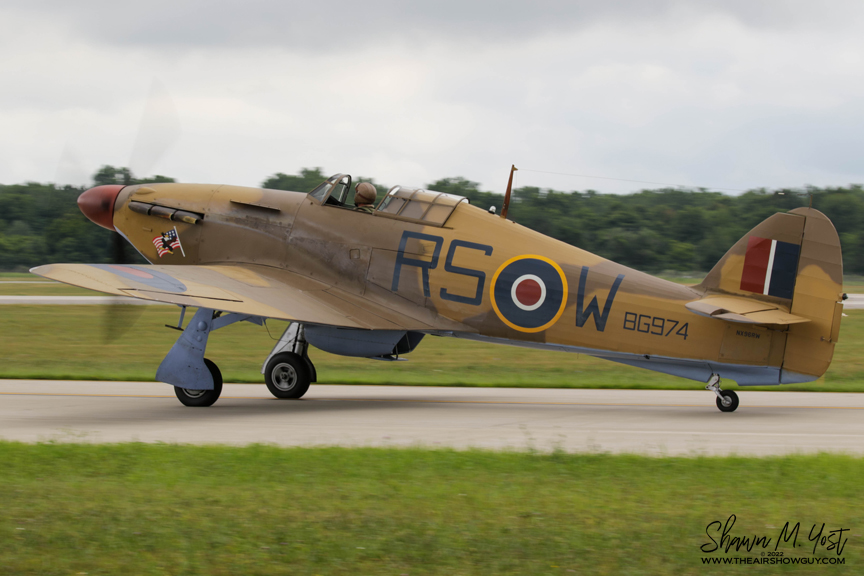
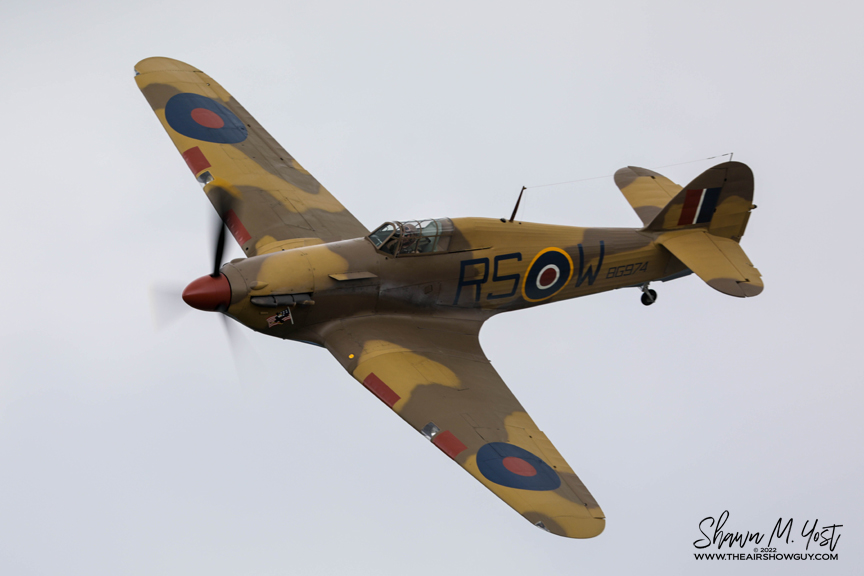
P-40M Kittyhawk III
The Tri-state Warbird Museum brought their immaculate P-40M Kittyhawk III for the first time. The airframe is a combat veteran, produced in 1943 as 43-5813, it was transferred to New Zealand Air Force under the lend-lease program. She served as NZ3119 as a training aircraft for 16 Squadron based at Air Station Woodbourne. During one flight, the right main gear collapsed, resulting in significant damage to the aircraft. As the 16 Squadron deployed, the airframe was abandoned.
Luckily, she was rescued from the scrap yard sometime in the 1960s and put into long-term storage. In 2006, the airframe was purchased by the Tri-State Warbird Museum and began the long restoration process with Allied Fighter Rebuilders based in Auckland New Zealand. In 2008 the airframe was shipped to the United States, where the final pieces of the restoration were completed. The airframe returned to flight in 2011. The aircraft suffered a minor accident which required additional repairs. Finally, the aircraft returned to flight in 2016.
Also in 2016, the airframe won the “Grand Champion, World War II” award along with the “Golden Wrench” at the EAA Oshkosh event. These two awards are considered the highest awards and most coveted in the warbird community.




It is refreshing to see a P-40 in an original livery!


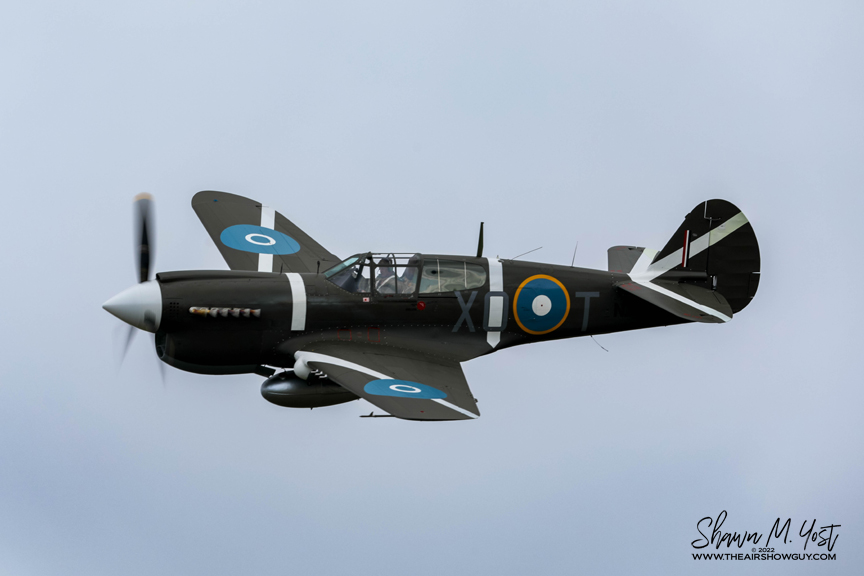


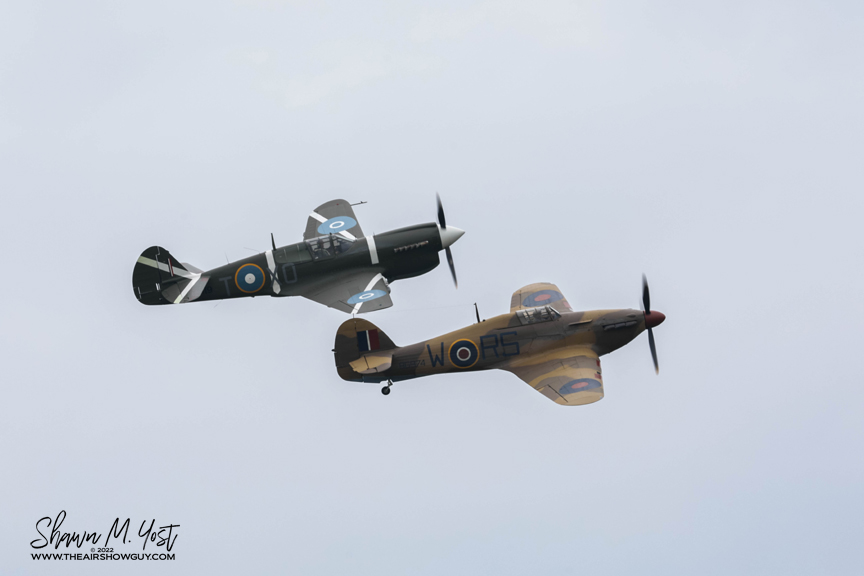

USAF F-16 Viper Demo and Heritage Flight
Capt. Aimee Fiedler piloted the USAF F-16 Viper demo jet. She is the commanding officer of the Viper Demo Team based at Shaw AFB, located in Sumpter, South Carolina. The demo jet wears a special snake like scheme and is affectionately known as “Venom”.




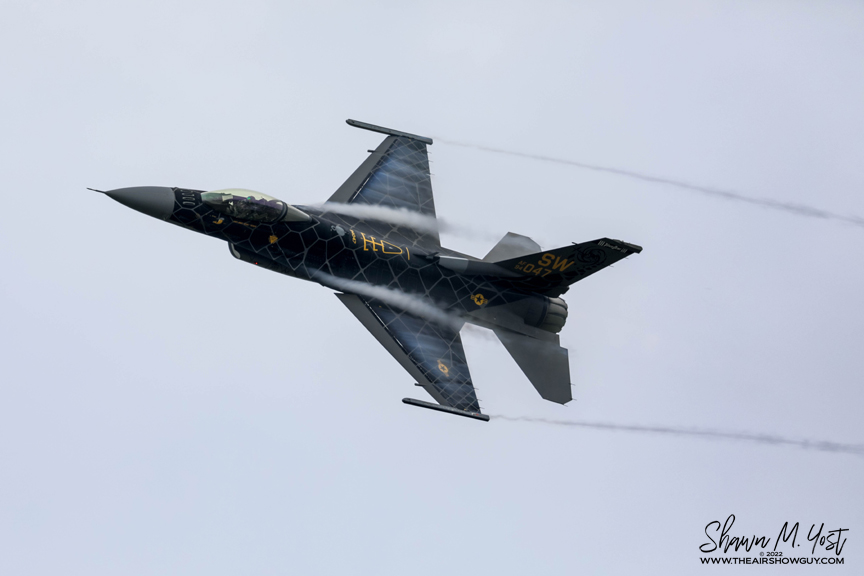


Jim Beasley piloted the P-51D Mustang “Bald Eagle” with Capt. Fiedler for the USAF Heritage Flight.



Jerry Conley’s DH-115 Vampire “Vampy Too”
Jerry Conley opened the afternoon portion of the warbird portion of the show in his beautiful Vampire jet known as “Vampy Too”. Jerry has a long history in the airshow community, having previously performed a jet warbird act in a L-29 Delphin and now performs exclusively as Vampire Airshows. He brings the aircraft in as close as he can to the crowd for excellent photo opportunities, and also shows off the capabilities of the historic Vampire.
The Vampire is truly a historic aircraft. The type was the world’s first single engine jet powered aircraft. It was also the first jet to take-off and land on an aircraft carrier as well as the first jet to cross the Atlantic Ocean. Jet engine technology was new and dangerous in the late 1940s. Considering the age of the aircraft and engine technology, the Vampire is an impressive aircraft.




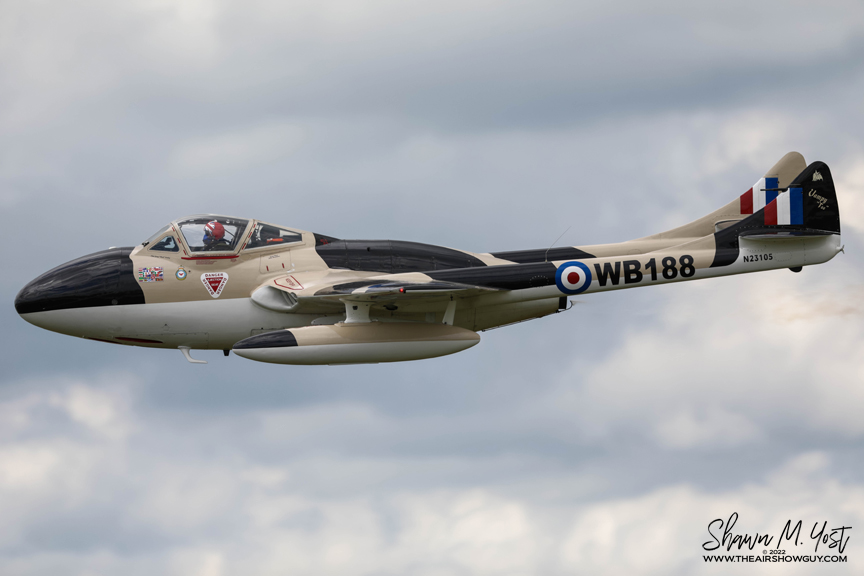


Vampy Too is configured with two wing-mounted extra fuel tanks. Armament consists of four Hispano Mk. V cannon as well as four 8 x 3-inch rockets. Thankfully, more Vampires are beginning to see flight and Jerry is one of the key people making it happen.
Fw 190 F-8
The second aircraft from the Tri-State Warbird Museum to appear was the Focke Wulf Fw 190. The Fw 190 is widely considered the German’s most feared and versatile aircraft of WW II.

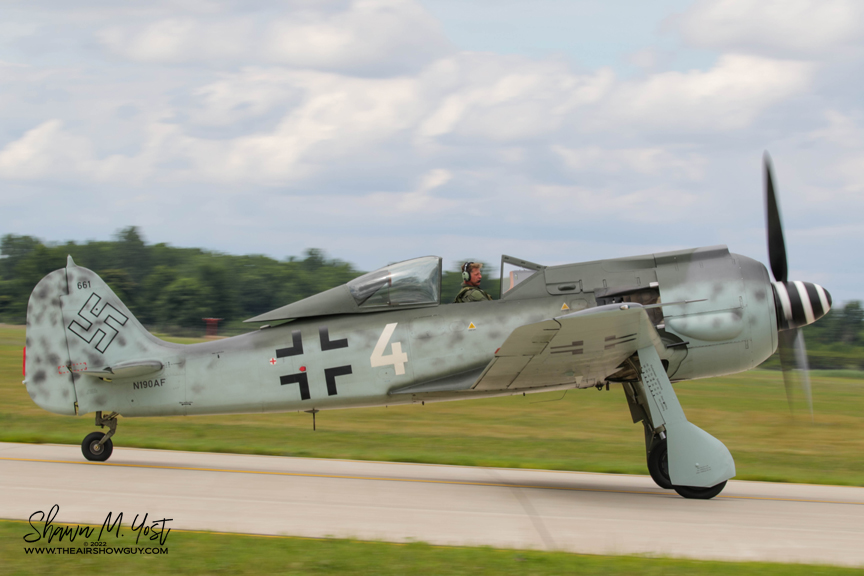

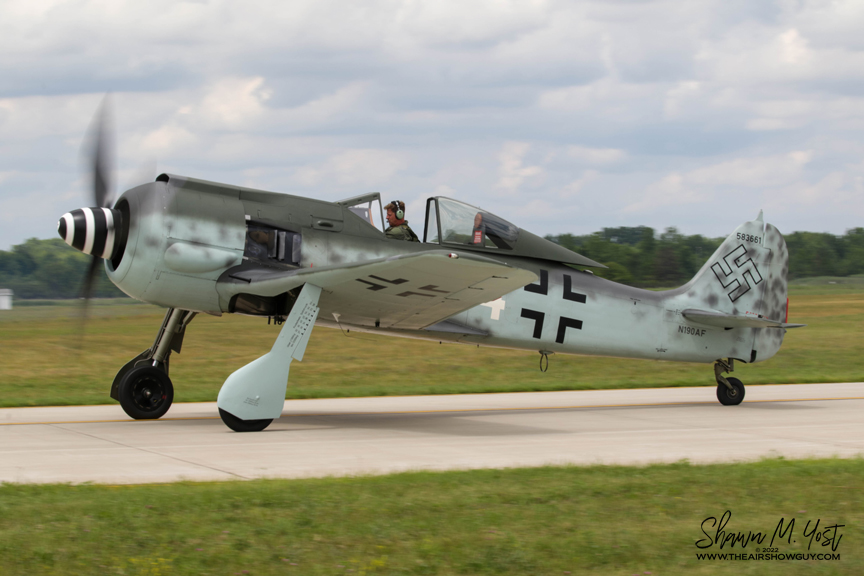

Although it looks like an authentic airframe, this is actually a mostly new build aircraft. The data plate and some parts are original. It was produced in Germany in the early 2000s, and was donated to the museum in 2007. After an engine retrofit, and some other work, it was completed in November, 2019. Ray Fowler piloted the aircraft for the demonstrations.
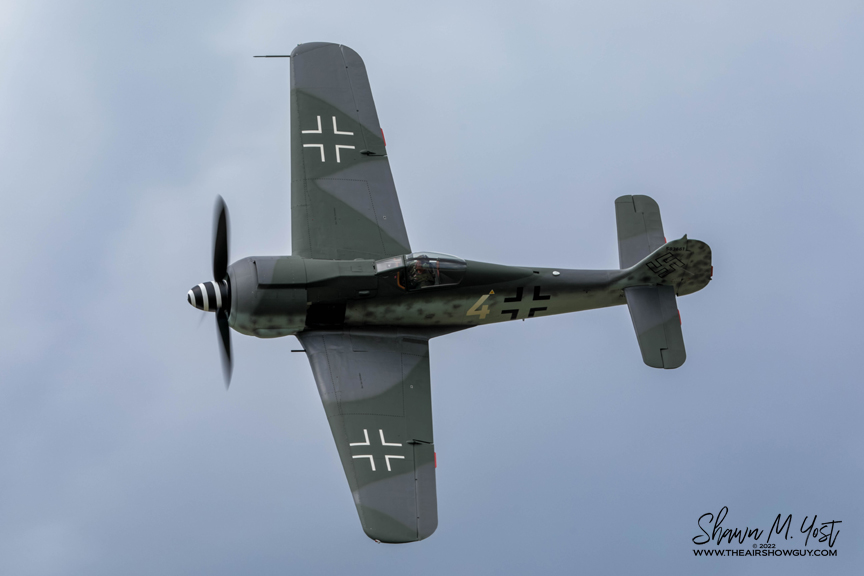

Me-109
One of the long-distance attendees was the Me-109 owned by the Erickson Aircraft Collection, located in Madras, Oregon. The 109 is the most produced aircraft of all time, with some 35,000 units being built. The airframe was produced into 1958. When the type was first flown in 1935, it was cutting edge and revolutionized the fighter aircraft design. The aircraft was very versatile allowing for armament modifications for the type of mission flown and engine tweaks that kept the performance on-par of the Allied aircraft.



This specific version is a Spanish built, Buchon version. The Buchon was powered by the Merlin engine (the same engine used by the Allies in the Spitfire and P-51 Mustang to name a few) and had the engines inverted, placing the exhausts lower on the cowling. The airframe is a movie star, having been used in the filming of the movie Battle of Britain. It has since been restored and modified to resemble a traditional Me-109, and is now powered by an Allison V-1710 which allows for a normal cowling.
Spitfire Mk. IXc
The second airframe from the Dakota Territory Air Museum to participate was the beautiful Spitfire Mk. IXc piloted by Bernie Vasquez.


The aircraft is a combat veteran, having served with the 302 Polish Squadron at Chailey, England serving as a fighter escort. The airframe flew escort for medium-bombers over France during the D-Day invasion. The airframe was transferred to the 329 Squadron, made up of Free French RAF pilots and based at Merston, and flew nineteen missions over the D-Day beachhead. In August, 1944, she was transferred again moving to 165 Squadron based at Detling. The new livery, 5AK flew 41 combat missions, including Operation Market Garden (Netherlands, September 17-27, 1944). The last claim to fame was during the post-war period, the airframe flew as escort for four C-47s transporting the exiled Belgian government officials back to Belgium.
Ohio Air National Guard F-16 Vipers
Two F-16 Vipers from the Ohio Air National Guard were on static display for Saturday’s show, then did a few passes before they flew home on Sunday. The aircraft are part of the 180th Fighter Wing, 112th Fighter Squadron “Stingers”. The unit is based at the Toledo Express Airport, and serves as the alert squadron for aerial intercepts in the Mid-West region,
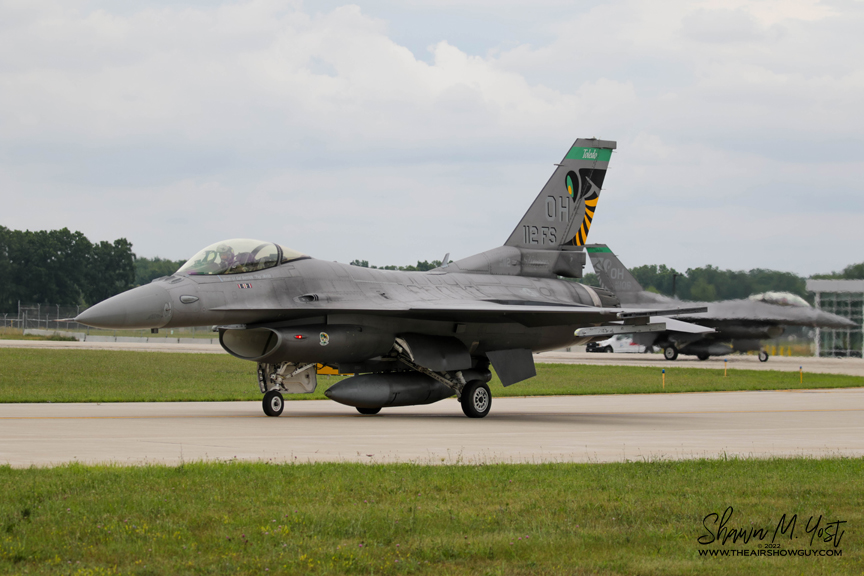



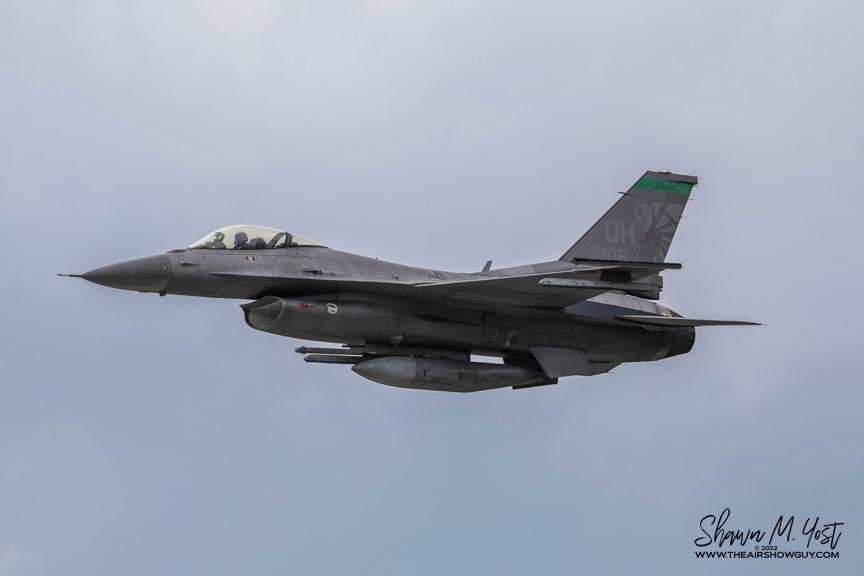

US Navy Blue Angels
The 2022 headliners were the United States Navy’s Blue Angels. The team is now in the second year with the F/A-18 Super Hornet and C-130J Hercules. While the weather did not allow for a high-show, the team did not miss a beat, performing a low show which provides great views of the formations.





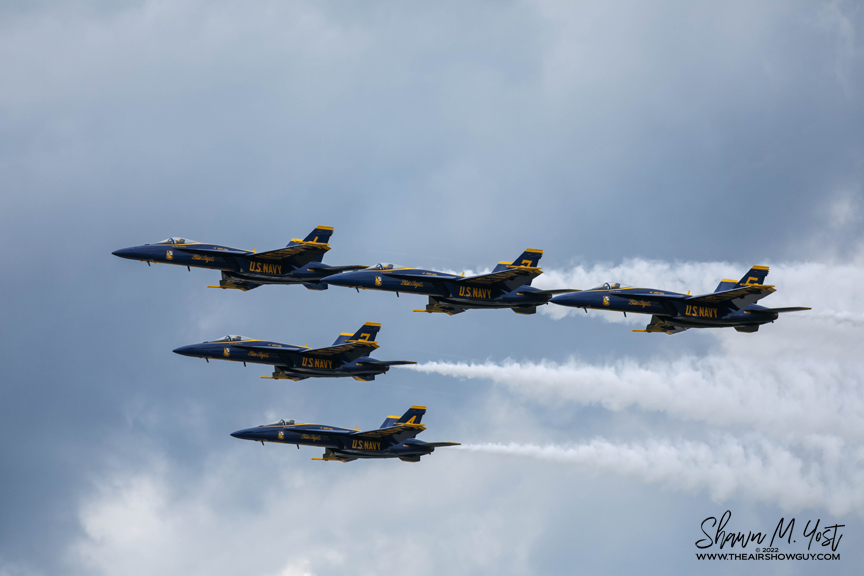

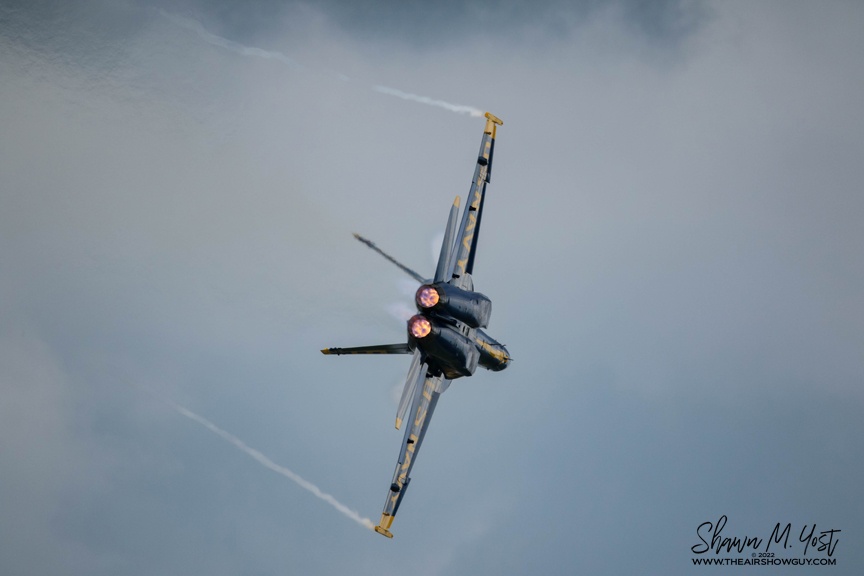








Around the Field
There were a handful of aircraft available to view on static display. Perhaps the most popular was the newly unveiled F/A-18E Super Hornet from VFC-12 “Fighting Omars” painted to represent an Su-57 Felon.
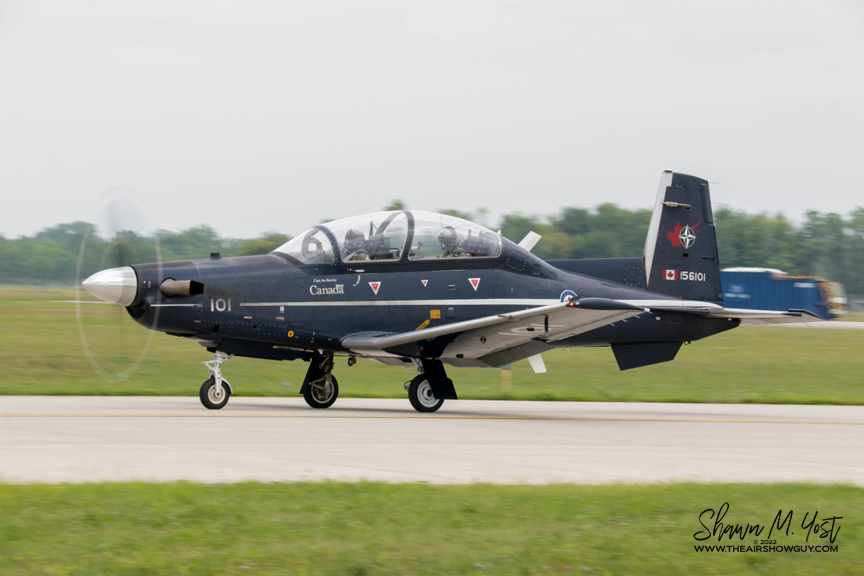







Evening Engine Runup Photo Shoot
Three aircraft were towed over to the ramp for the evening photo shoot. First up was the Toledo ANG F-16 Viper, followed by the Me-109 and lastly the P-40M. We were told that this was the first time an ANG unit participated in this type of photo shoot.
